The Hisense U8Q is a television that makes it hard not to feel that the manufacturer approached the topic with the ambition of a top student. The picture is strong, vibrant, and contrasty – as if shouting: "look, I can do more than most at this price!" And indeed, there’s something to that. The secret lies in the large number of dimming zones in Mini-LED technology. Thanks to them, HDR doesn’t end with the promises from the brochure but can truly impress – especially during evening screenings. It’s also hard to complain about motion fluidity. Watching matches and fast-paced games is enjoyable, and while the ball might occasionally leave a slight trace, for 99% of viewers, it will be a detail of no consequence in everyday watching. Gamers also have reasons to be satisfied here – although it’s worth immediately mentioning the lack of HGiG support. Other than that, it’s really good: low input lag, three HDMI 2.1 ports, and a full suite of gaming features make the U8Q one of the more interesting Mini-LEDs for console fans. Of course, there are no perfect products. The television still carries some “mini-led” characteristics, and the Vidaa system – while feature-rich – can be less intuitive and has a more modest selection of applications than competing platforms. But are these serious flaws or rather minor quibbles in the context of the price and what we actually get? We leave that question for you to answer!
- Matching (Score)
- Our verdict
- TV appearance
- Where to buy
- Contrast and black detail
- HDR effect quality
- Factory color reproduction
- Color reproduction after calibration
- Smoothness of tonal transitions
- Image scaling and smoothness of tonal transitions
- Blur and motion smoothness
- Console compatibility and gaming features
- Input lag
- Compatibility with PC
- Viewing angles
- Daytime performance
- Panel details
- TV features
- Apps
- Playing files from USB
- Sound
Hisense U8Q vs TCL C7K / QM7K 55"-85"
Direct comparison
U8Q
C7K / Q7C / MQLED85K / C79K / C71K / QM7K
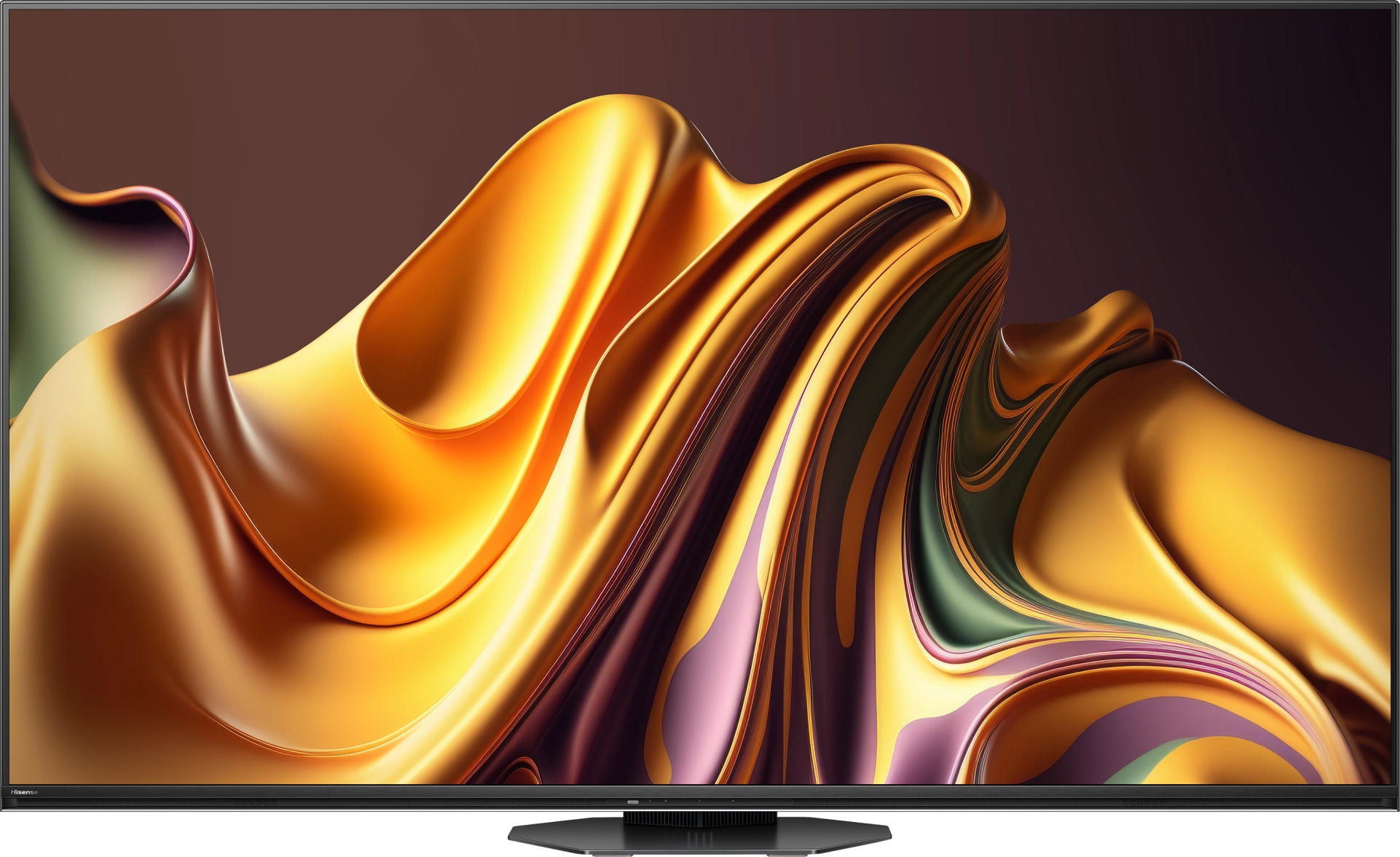
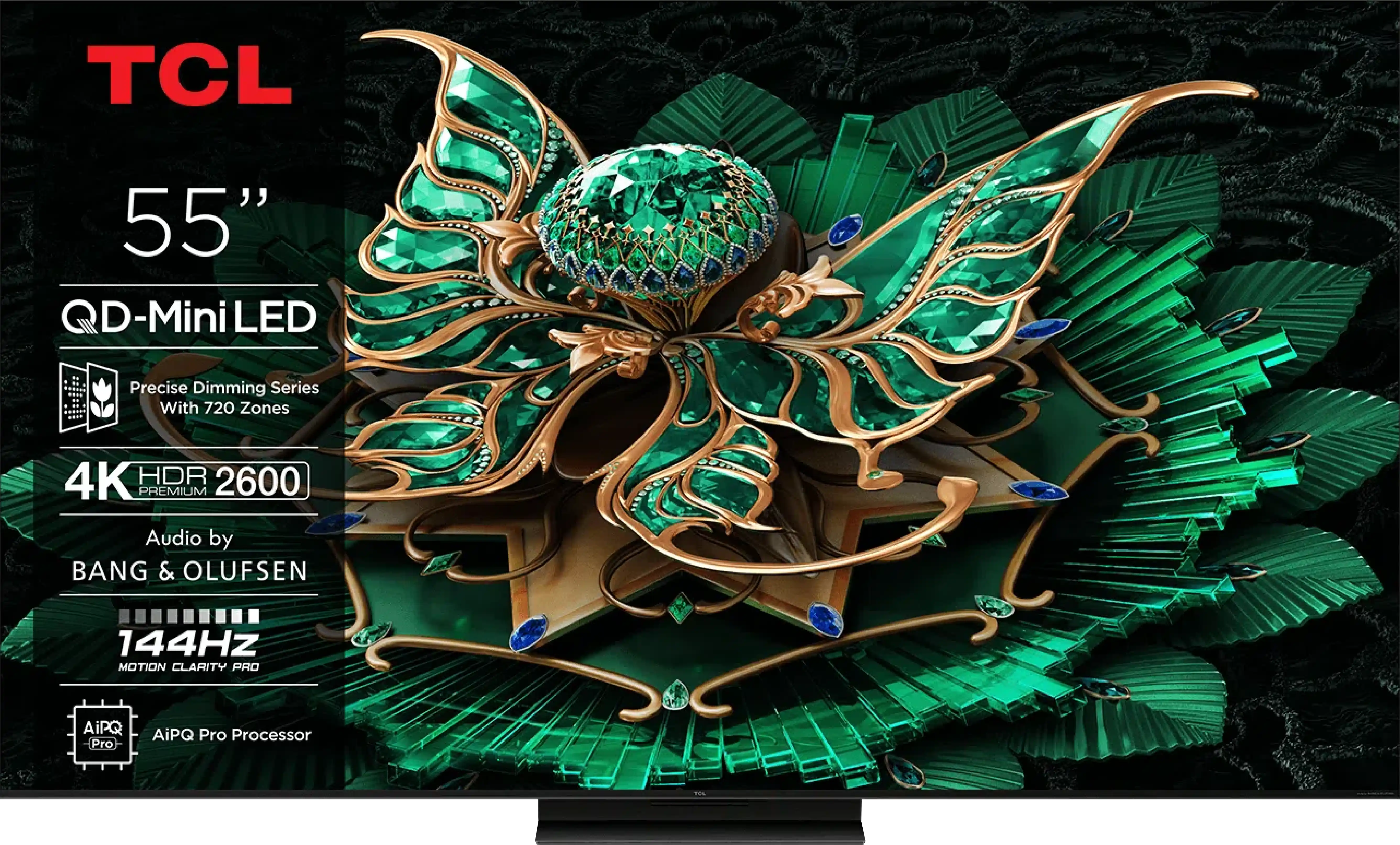
Panel type: LCD VA
Resolution: 3840x2160
System: VIDAA
Model year: 2025
Complete the survey to find out the result

Panel type: LCD VA
Resolution: 3840x2160
System: Google TV
Model year: 2025
Complete the survey to find out the result

Overall rating
8.0
7.4
Movies and series in UHD quality
7.8
7.2
Classic TV, YouTube
7.6
6.9
Sports broadcasts (TV and apps)
7.1
6.8
Gaming on console
8.5
8.7
TV as a computer monitor
8.4
8.4
Watching in bright light
8.2
6.4
Utility functions
9.4
7.3
Apps
7.7
9.6
Sound quality
7.8
7.7
Complete the survey to find out what fits your preferences
Advantages
Great black and contrast
Amazingly high brightness
Full HDR format package: HDR10, HDR10+, Dolby Vision
Good motion fluidity - 165Hz panel
Outstanding usability in difficult lighting conditions (High brightness + New anti-reflective coating on the panel)
Many features for gamers, VRR, ALLM, HDMI 2.1, 288Hz for PC
All 3 ports in HDMI 2.1 standard (Finally!)
USB-C with video signal transmission capability (Displayport)
Many features in the Vidaa system
Support for DTS and Dolby Atmos
Very good black - VA panel with a large number of Mini-LED zones
High brightness in HDR - over 1000 nits
Great for gamers - HDMI 2.1, low input lag, VRR, ALLM, etc.
Good motion fluidity - 144Hz panel
Supports multiple HDR formats: HDR10, HDR10+, Dolby Vision
Google TV operating system with access to a huge app library
Pleasant sound from built-in speakers (6.2.2) Bang & Olufsen
Disadvantages
Missing some applications in the Vidaa operating system
At maximum volume, the television shakes slightly
The television tends to "burn out" the picture in 4K HDR materials.
Google TV can work with minor stutters
No USB recording and PiP function
Our verdict
There are TVs that make it to reviews and at first glance seem like just another "mediocre" model. The TCL C7K looks just like that – without big slogans about revolution, without ambitions to dethrone OLEDs. Yet after spending a few days with this model, it's hard not to come to the conclusion that it's truly a successful piece of equipment. The biggest advantages? Very good picture quality at a reasonable price. MiniLED combined with a QLED filter delivers vibrant colors, high brightness, and contrast that really impresses in this class. Motion in sports or games looks smooth, and the presence of HDMI 2.1 and 144 Hz refresh rate makes gaming on this model pure enjoyment. Additionally, the Google TV system offers a huge range of possibilities: from voice control, to AirPlay support, to access to all the most important applications.
Are there any drawbacks? Yes. MiniLED still has its limitations, and in the most challenging movie scenes, compromises in dimming can be noticeable. Google TV also doesn't always operate perfectly smoothly. But these are rather minor issues that do not overshadow the overall picture – which is truly positive. It’s also worth highlighting the difference between variants. The 50-inch version we tested can be surprising, but the 55–85 inch models perform distinctly better – they have more backlight zones, even better contrast quality, and superior sound. Therefore, if you're considering purchasing the C7K, it's definitely worth going for a larger size.
TV appearance
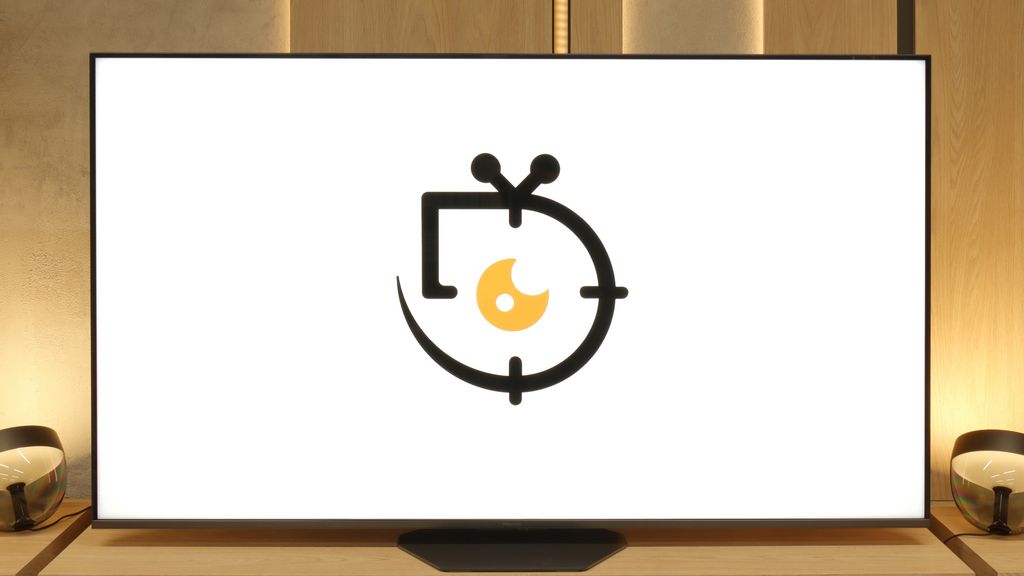
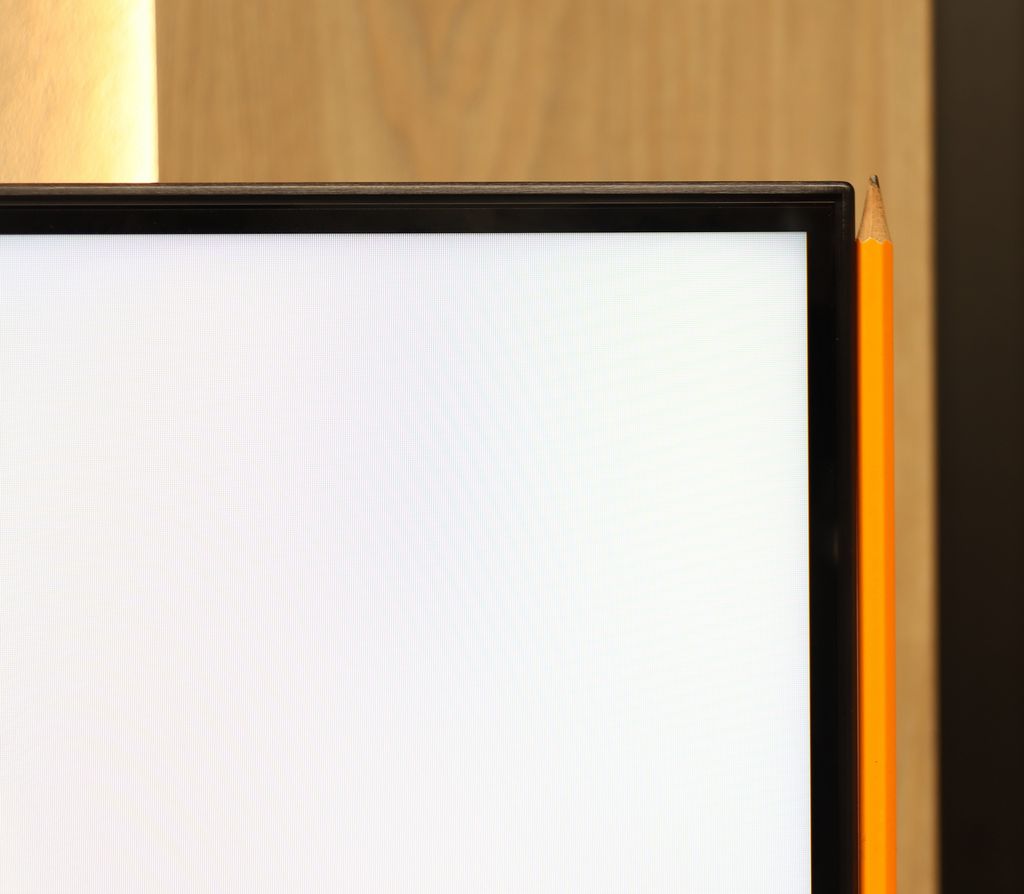
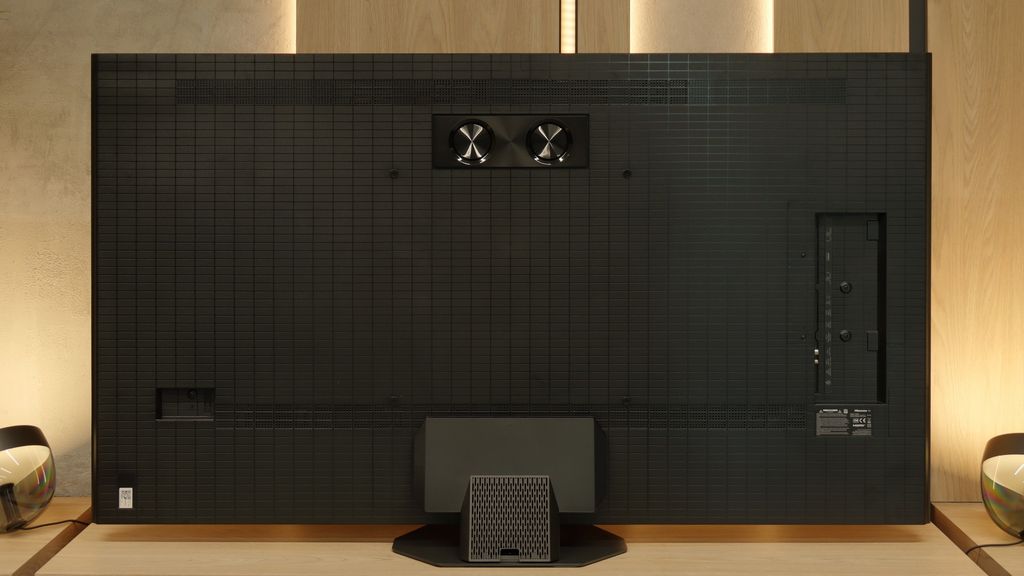
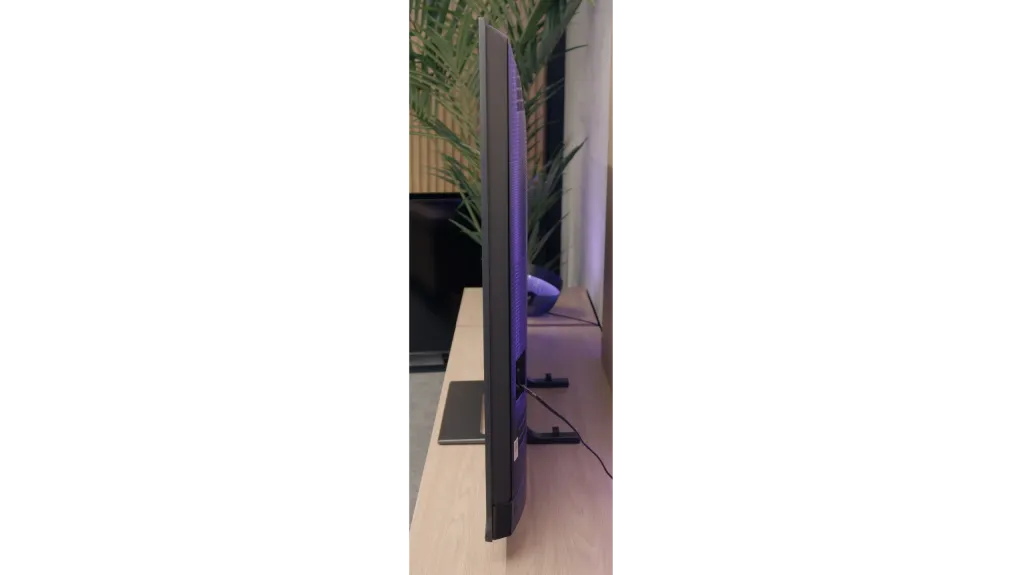

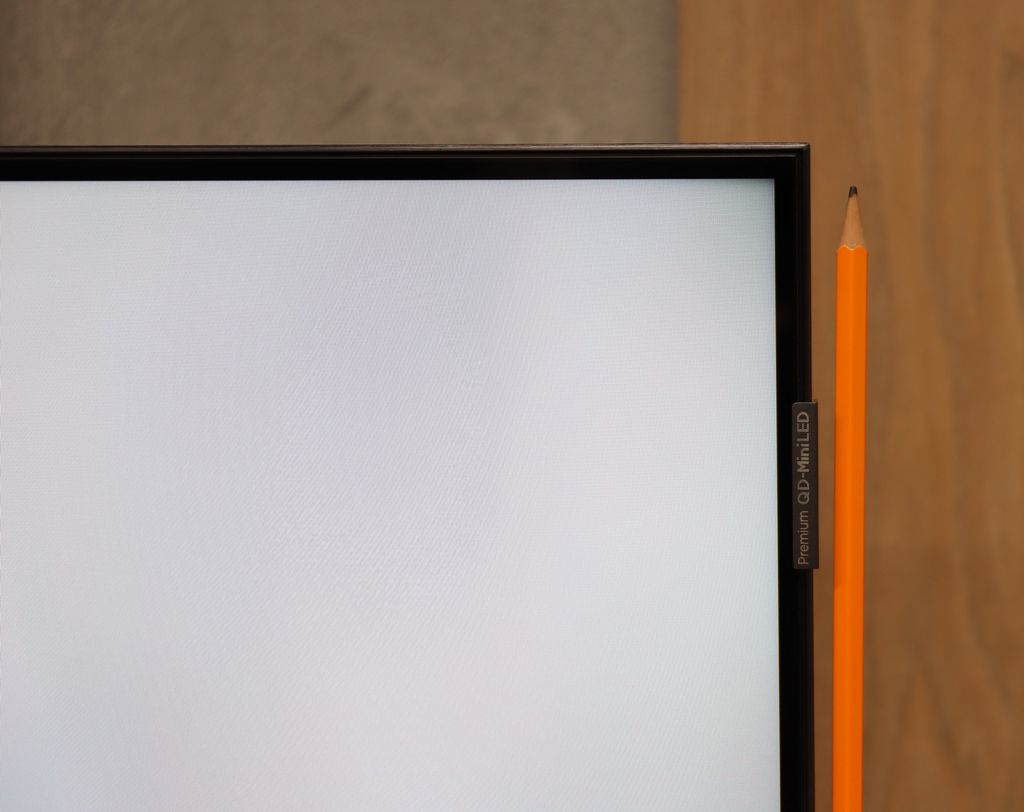
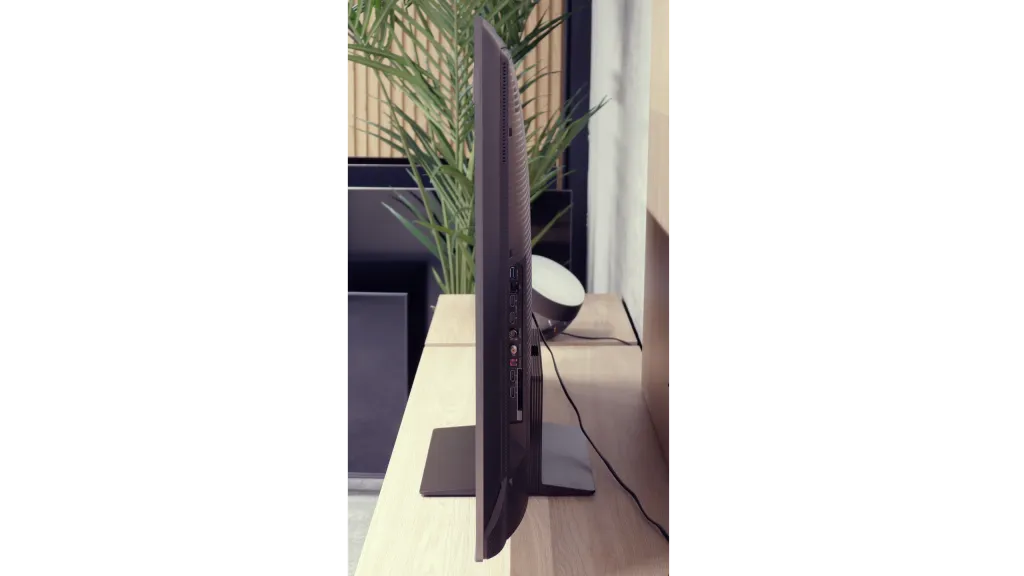
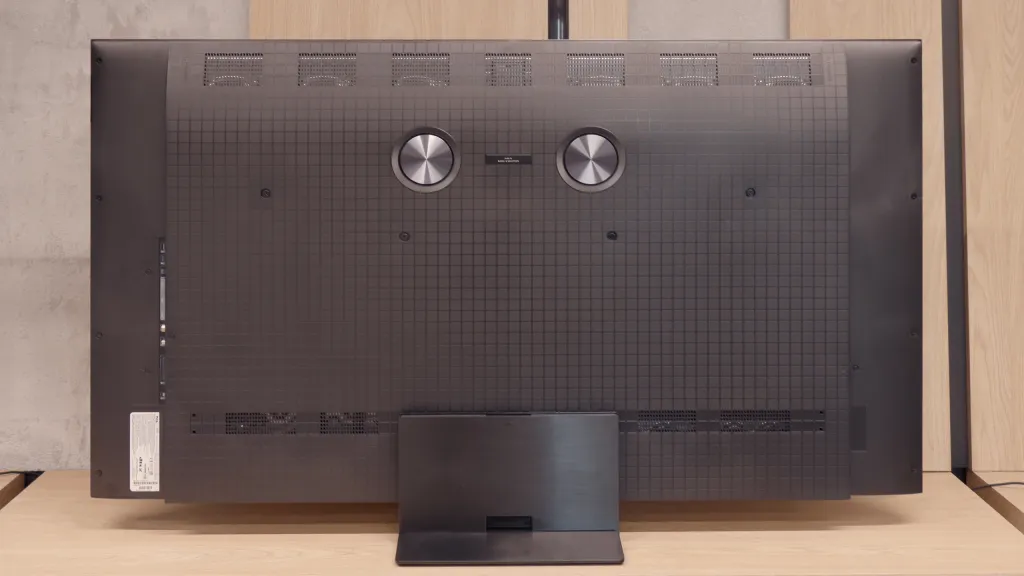
Contrast and black detail
8.6/10
8.1/10
Local dimming function: Yes, number of zones: 2048 (32 x 64)
Local dimming function: Yes, number of zones: 1008 (42 x 24)
Contrast:

Result
1,024,000:1

Result
140,000:1

Result
35,000:1

Result
22,350:1

Result
22,300:1

Result
256,000:1

Result
59,850:1

Result
22,200:1

Result
16,850:1

Result
11,400:1
Halo effect and black detail visibility:

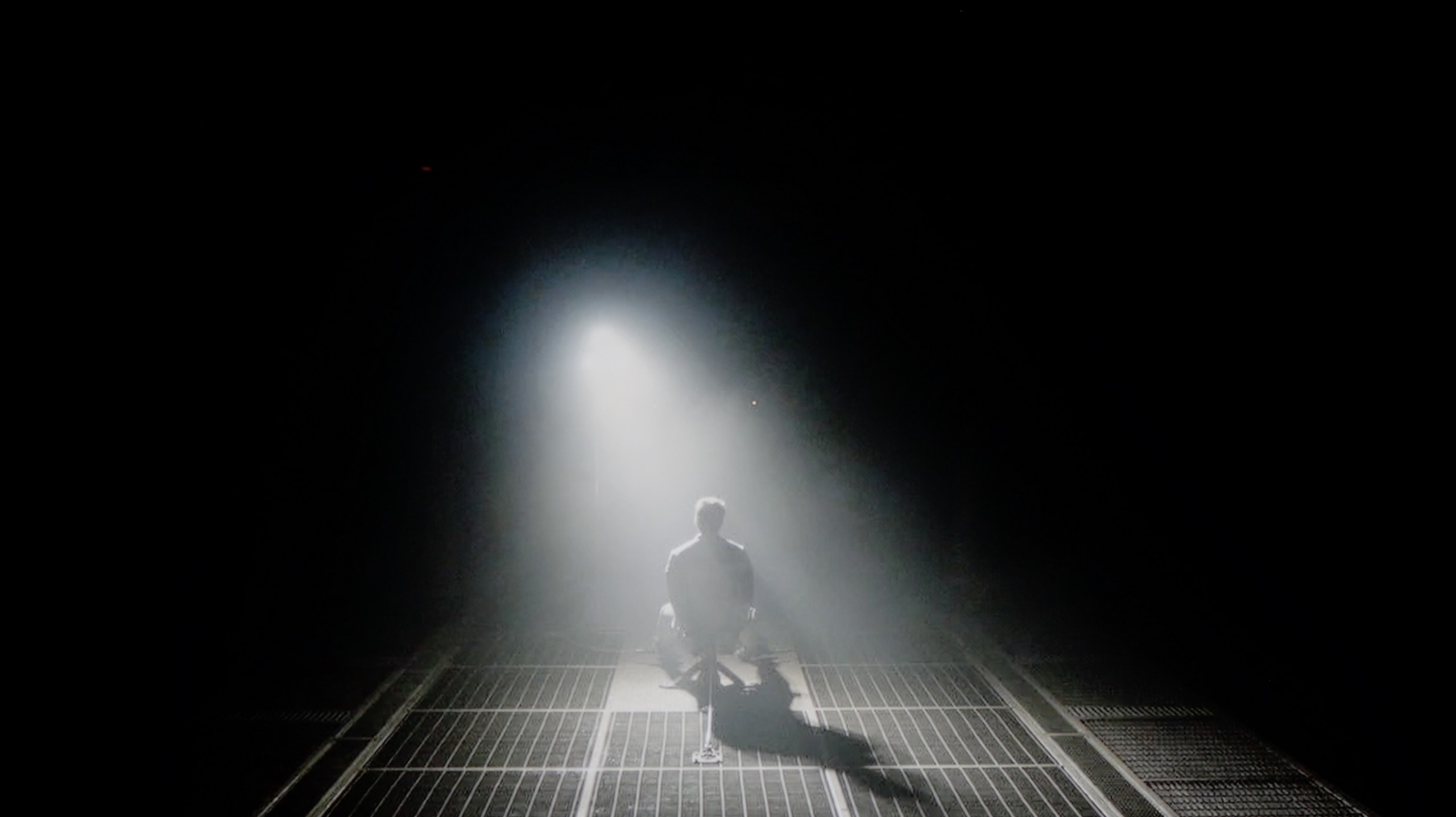
The unit we tested, the Hisense U8Q in size 65 inches, is equipped with a VA panel that, in itself, offers a high native contrast. However, that is not the greatest strength of this model – the key lies in the Mini LED backlighting. Thanks to the use of thousands of dimming zones and a really well-developed light management algorithm, the contrast in the U8Q can be described as excellent, especially for a TV of this technology.
The best results reach a level of about one million to one – a result that is commendable and places the U8Q among the top Mini LED TVs. Yes, there are some hiccups and even drops in contrast, but they are not as dramatic as in many other models of this class that we have tested on our portal. It's also worth remembering that like every Mini LED TV, the U8Q is not completely free from typical imperfections – sometimes the image may be dimmed too much or there might be slight overexposure with a halo effect. Nevertheless, this does not change the overall impression: the contrast in the Hisense U8Q makes a striking impression and is one of the model's greatest advantages.
The results of black and contrast tests on models from 55 to 85 inches are very similar, which is why in the main part of the evaluation we refer to the 65-inch version. It is a natural phenomenon that larger sizes mean a greater number of backlight zones, and in the case of 65 inches, we counted over 1000. The effect is very good – the contrast is at a high level and is definitely better than in the smallest, 50-inch variant. Typical MiniLED limitations are still noticeable, such as the halo effect or a somewhat too aggressive dimming of the image, but here they are less perceptible than in the smaller model.
For comparison, it is worth recalling that the 50-inch TCL C7K, although surprising with its use of as many as 336 dimming zones, had difficulties managing the backlight in more complicated scenes – there were instances of overexposure or loss of detail. In larger sizes, this problem does not disappear completely, but thanks to a greater number of zones, its impact on the image perception is less bothersome.
HDR effect quality
7.6/10
6.2/10
Luminance measurements in HDR:

Result
2195 nit

Result
725 nit

Result
1652 nit

Result
485 nit

Result
1541 nit

Result
1108 nit

Result
405 nit

Result
865 nit

Result
290 nit

Result
848 nit
Scene from the movie “Pan” (about 2800 nits)

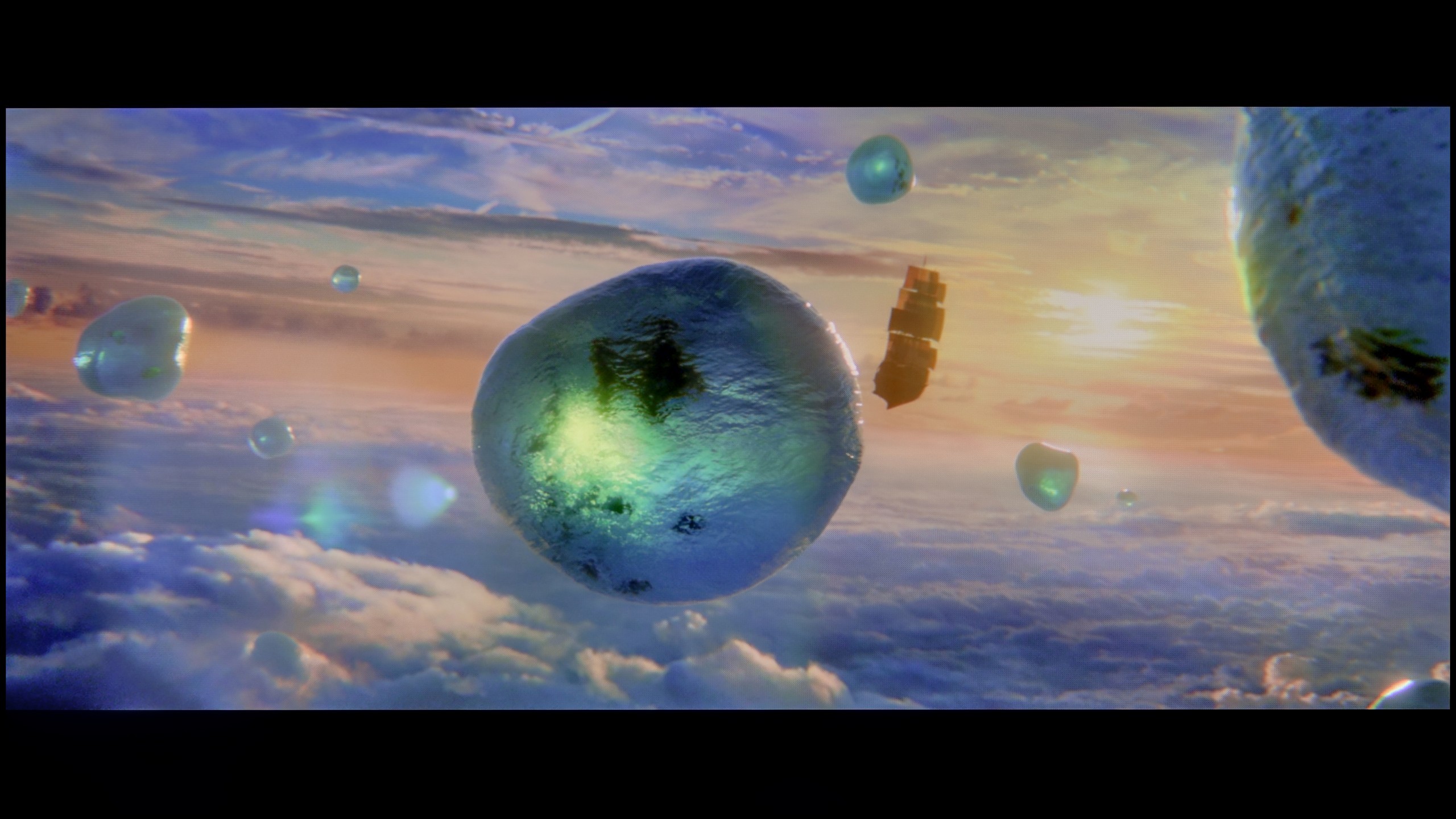
Scene from the movie “Billy Lynn” (about 1100 nits)
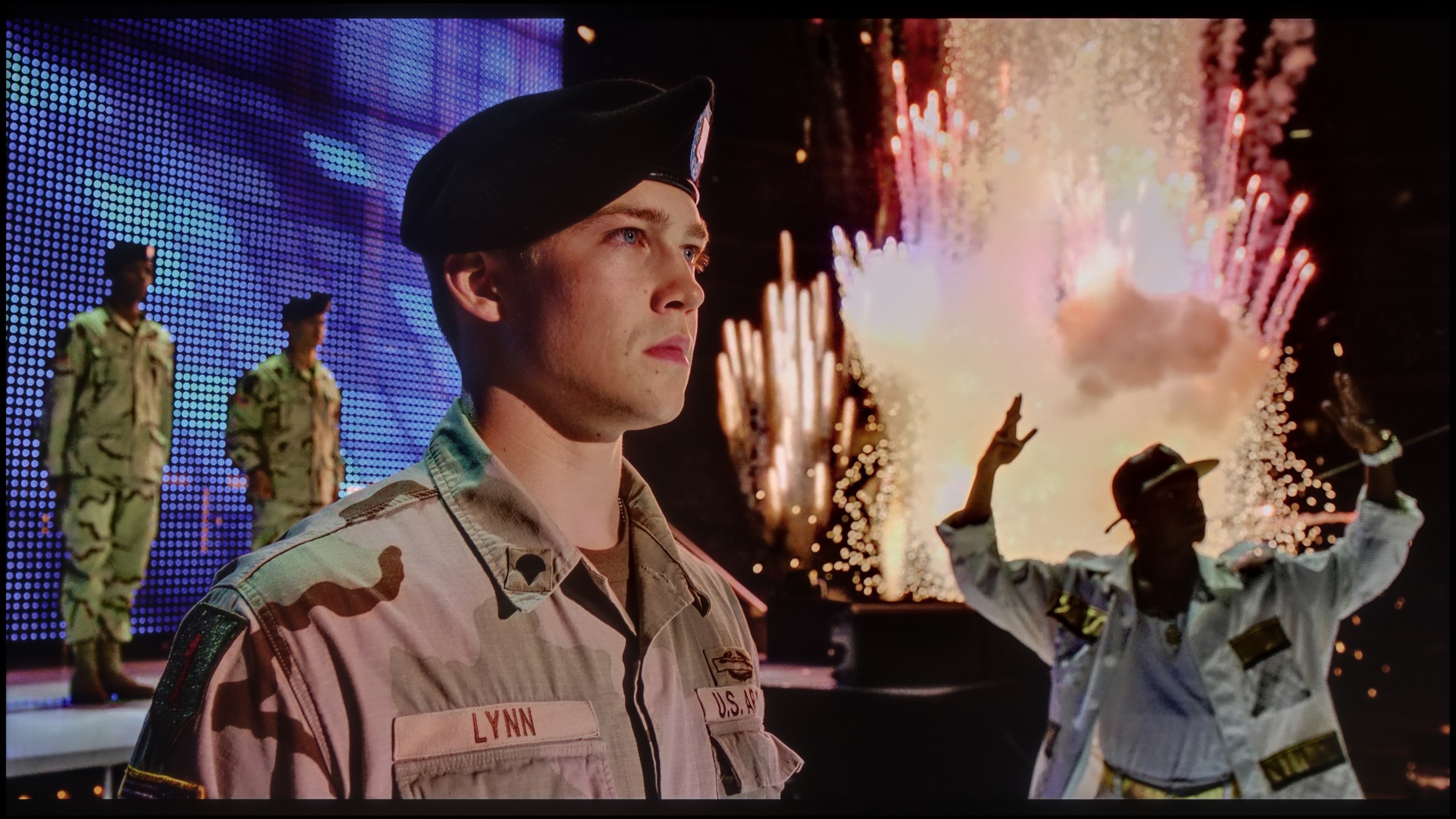
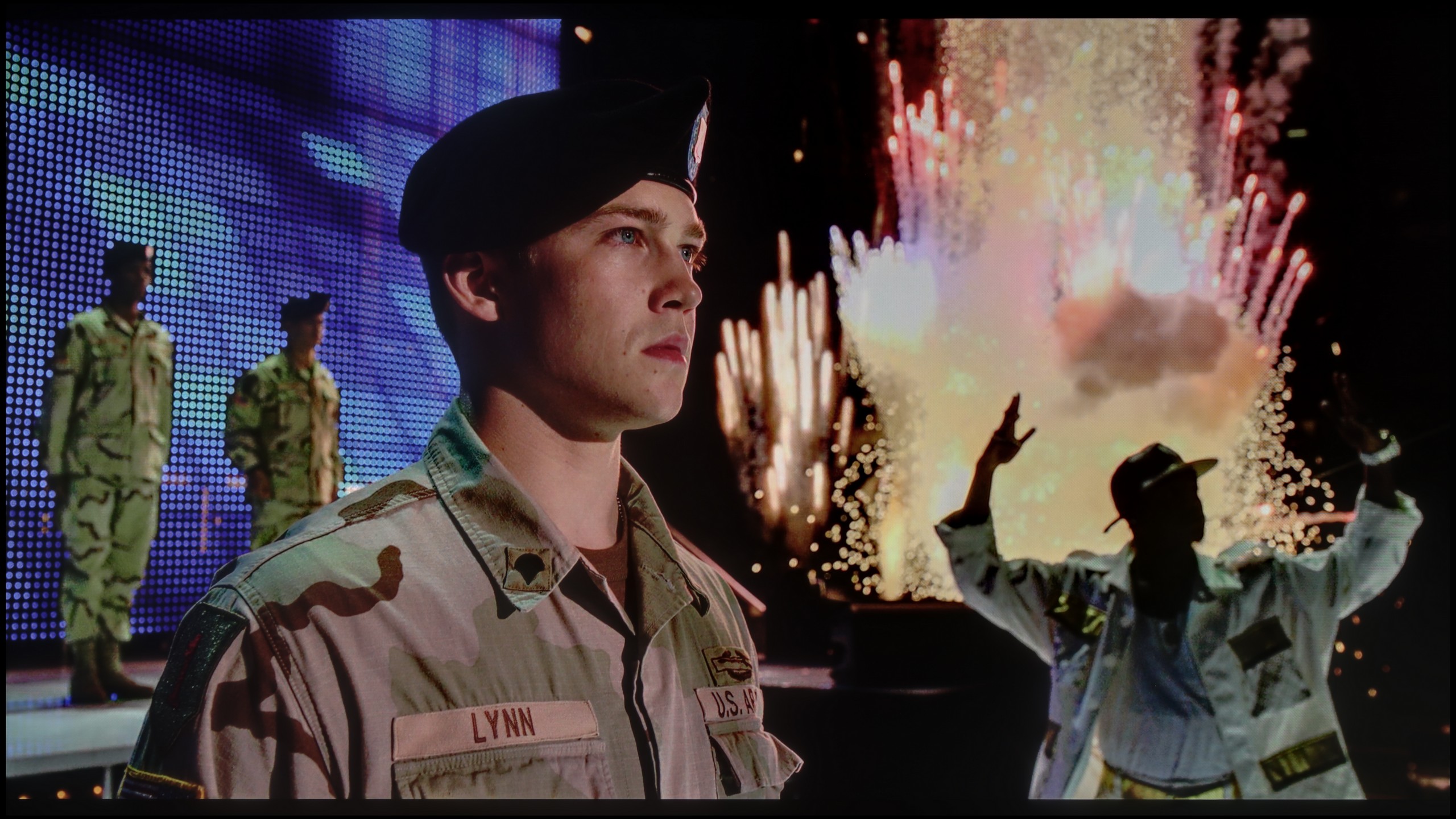
Static HDR10


Dynamic: Dolby Vision
Dynamic: Dolby Vision


HDR luminance chart:
TCL C7K / QM7K 55"-85"
HDR luminance
Hisense U8Q
HDR luminance
When it comes to HDR, Hisense U8Q shows its claws. On paper, meaning in synthetic measurement tests, the television can "score" nearly 4000 nits of peak brightness. That's a value that most models can only envy. In practice, this translates to very strong lighting effects in films – in some scenes, we managed to measure a real 1500 to 2000 nits, which is a level usually reserved for the absolute top of televisions on the market.
Of course, it's not always that perfect. With small, pinpoint elements, brightness can drop – a good example is scene number 4 from the movie Sicario 2, where instead of thousands of nits, we get around 500. But it's worth noting that the effect doesn't vanish completely – the light is still visible, and the image doesn't feel artificially dimmed. This is a typical drawback of Mini LEDs, so it's hard to consider it a significant minus.
On the huge plus side, color reproduction deserves high praise. Thanks to additional coatings that improve color saturation, the U8Q nearly covers the full DCI-P3 color space (98%), and in the case of the wider BT.2020 gamut, it achieved a score of over 80%. This is an excellent result, making HDR films look juicy, vibrant, and simply very cinematic.
In terms of brightness, the models from 55 to 85 inches in the C7K series are truly impressive. In the best testing conditions, the 65-inch screen achieved over 1200 nits, which practically means that the brightest scenes can dazzle with almost cinematic brilliance. These are not just dry numbers from measurements – during screenings, white skies, explosions, or light reflections on water looked incredibly striking, often giving the impression that the television exceeds its price class. This is particularly effective in scenes with a large area of illumination, where the screen is filled with intense brightness – such as in sun-drenched shots or during dynamic action sequences. Viewers looking for strong HDR will definitely be satisfied.
However, scenes requiring precise control of backlighting – with small points of light on a dark background – are more challenging. Here the C7K, despite having over a thousand zones, can still dim brightness to maintain deep blacks. The effect is that in films like Sicario 2 or Life of Pi, some details, such as a distant lantern or single reflections, can be less defined or blend in with the surroundings. This is a compromise inherent to MiniLED technology – it provides excellent image depth and blacks at a level that ordinary LCDs do not offer, but this comes at the cost of limited visibility of the smallest lights.
Factory color reproduction
7/10
6/10
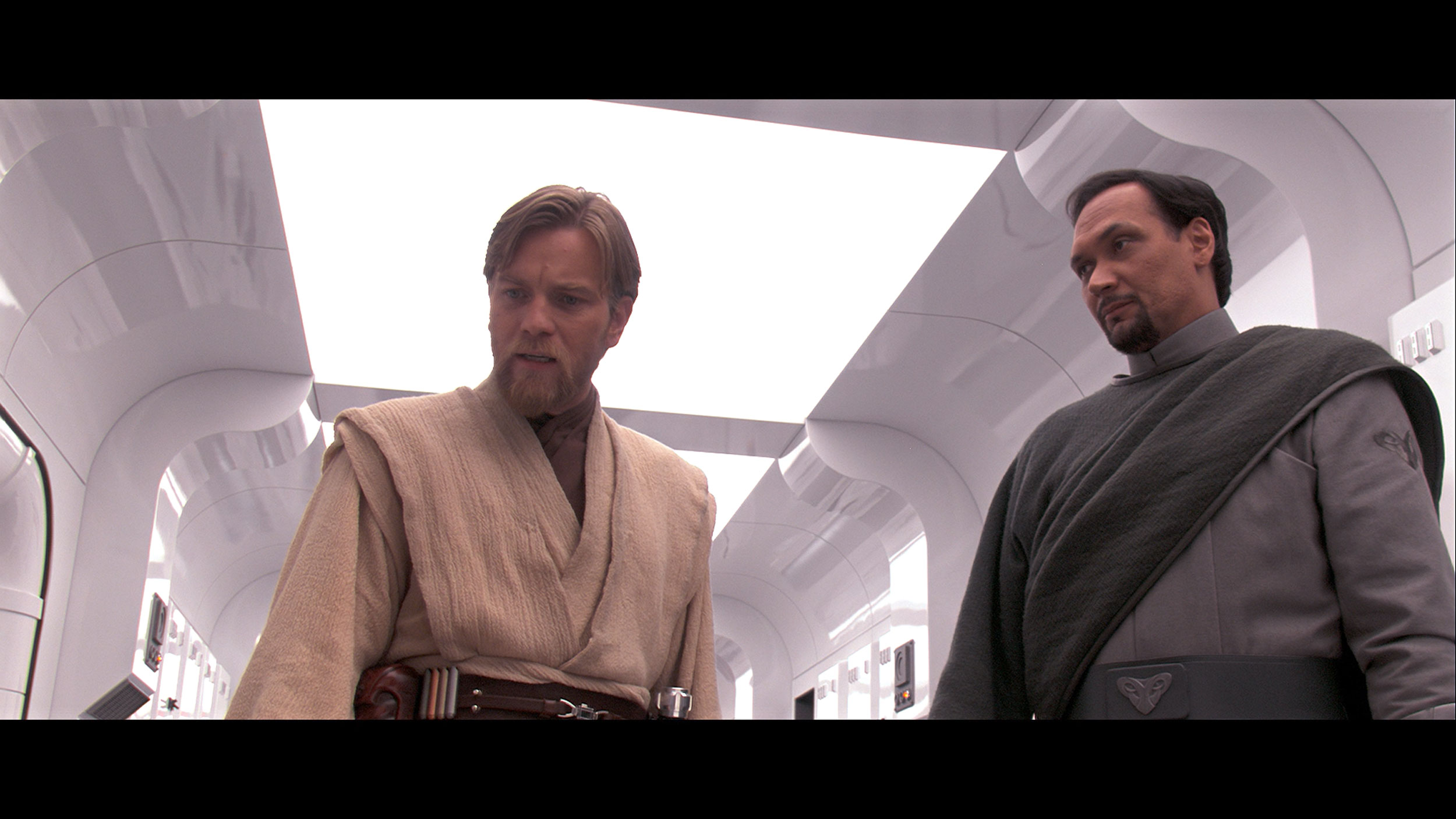

Factory Mode
After calibration
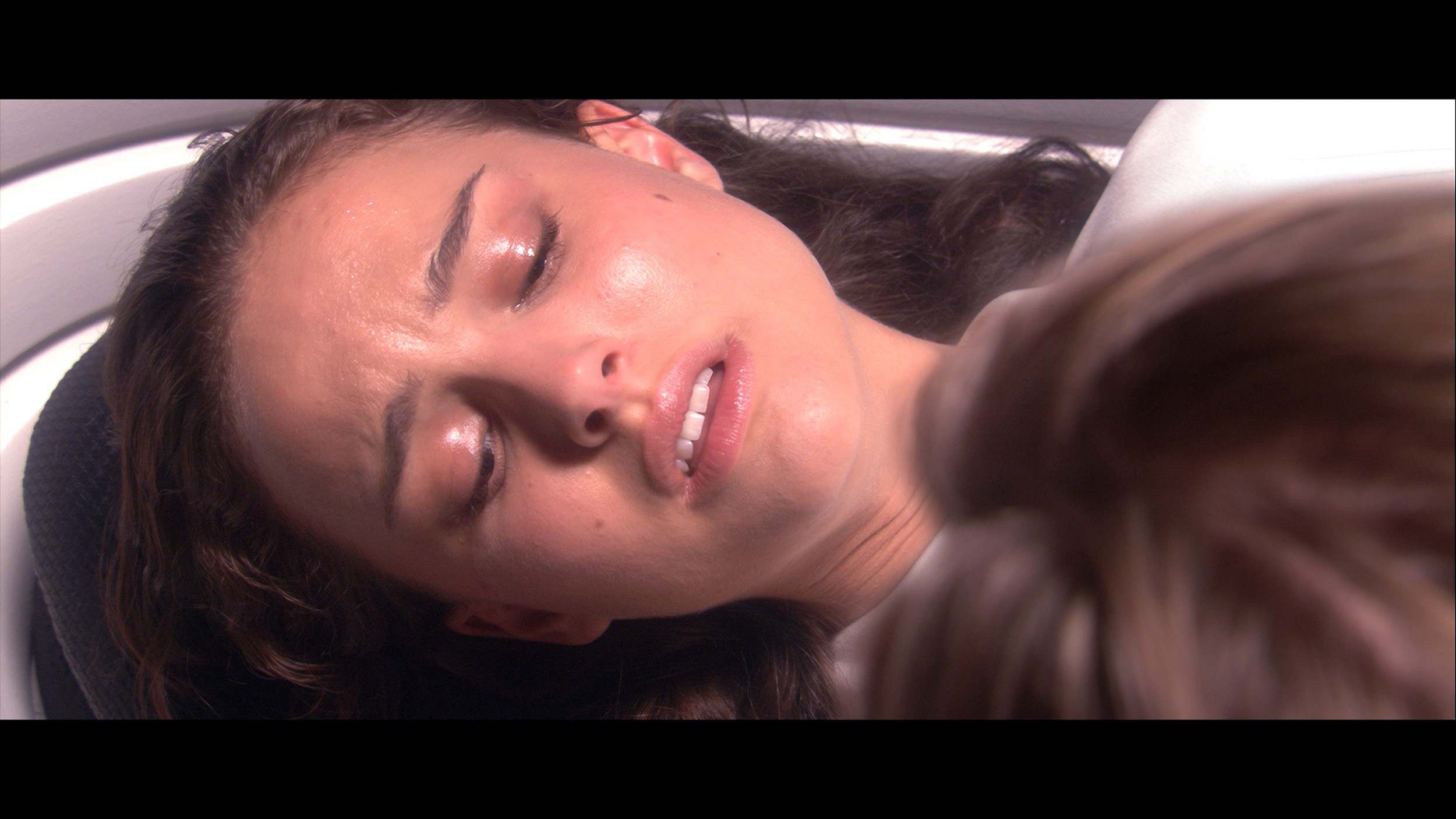
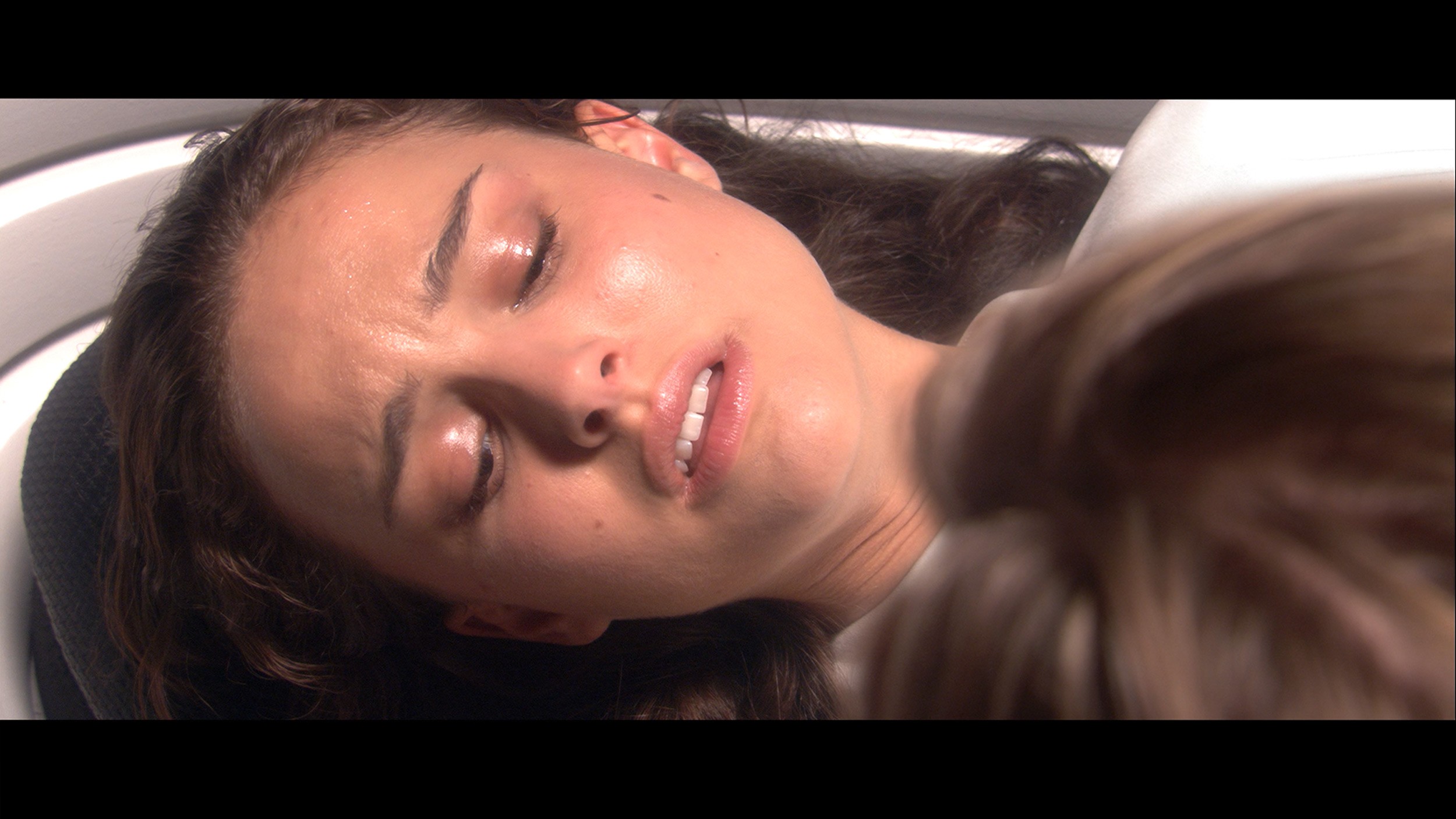
Factory Mode
After calibration
We have to admit that when the U8Q arrived at our editorial office, we were slightly surprised… and positively so. Usually, televisions require immediate white balance correction – it can be too warm or too cold, which immediately leads to strange color errors. Meanwhile, here the situation looks really good right out of the box. Of course, we are talking about our unit, so there’s no guarantee that every model will be tuned as well, but in our case, the first impressions were very positive. The only more pronounced issue was related to how the television manages brightness. Looking at the EOTF chart, it is evident that the U8Q tends to brighten small elements on the screen. This, in turn, caused what we mentioned earlier – slight overexposures and the impression that the entire scene can sometimes be a bit too bright. However, this is not a flaw that undermines the image, rather it is a characteristic effect of this model.
The novelty in TCL televisions for 2025 is the long-awaited Filmmaker mode, which until now could be found in most competitive brands. This is great news because this mode is considered the most faithful to the original vision of the creators and is often recommended by enthusiasts of good picture quality. Unfortunately – as is often the case – the mere presence of this mode does not guarantee perfection. The Filmmaker mode in the TCL C7K is not free from flaws. One could point out the incorrect white balance, particularly the slight dominance of blue, which led to cool, somewhat grayish skin tones. But that was not the biggest problem. The main complaint was excessive brightness exposure, which is clearly visible in the gamma and EOTF charts. The image was simply too bright, at times almost blown out, which affected not only the depth of scenes but also the overall viewing experience. Some details were simply lost, and the whole image looked as if someone had slightly overdone the brightness slider. As always – we decided to see what could be squeezed out of this after calibration. And that’s when things started to get really interesting…
Color reproduction after calibration
8/10
7.5/10
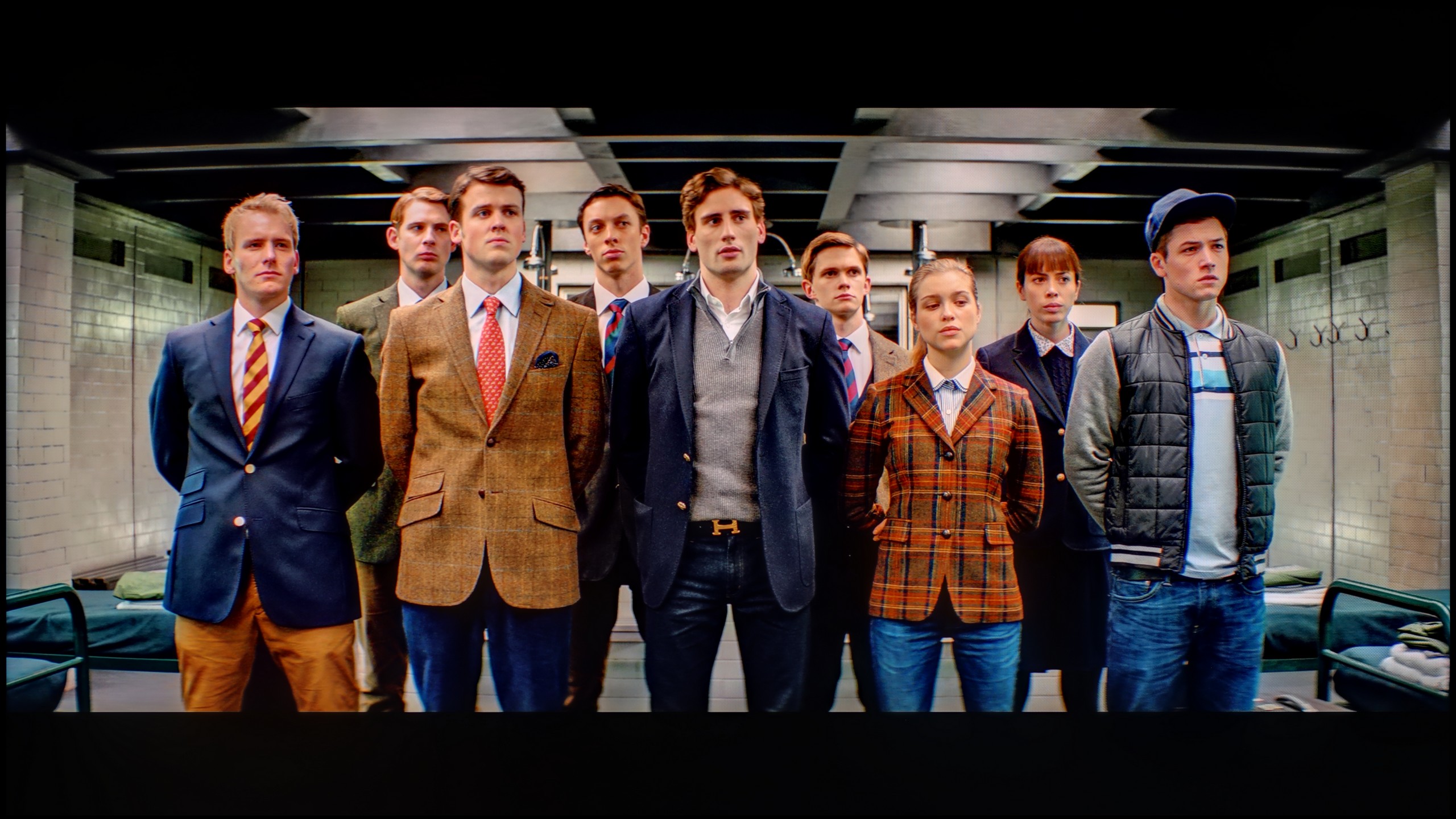
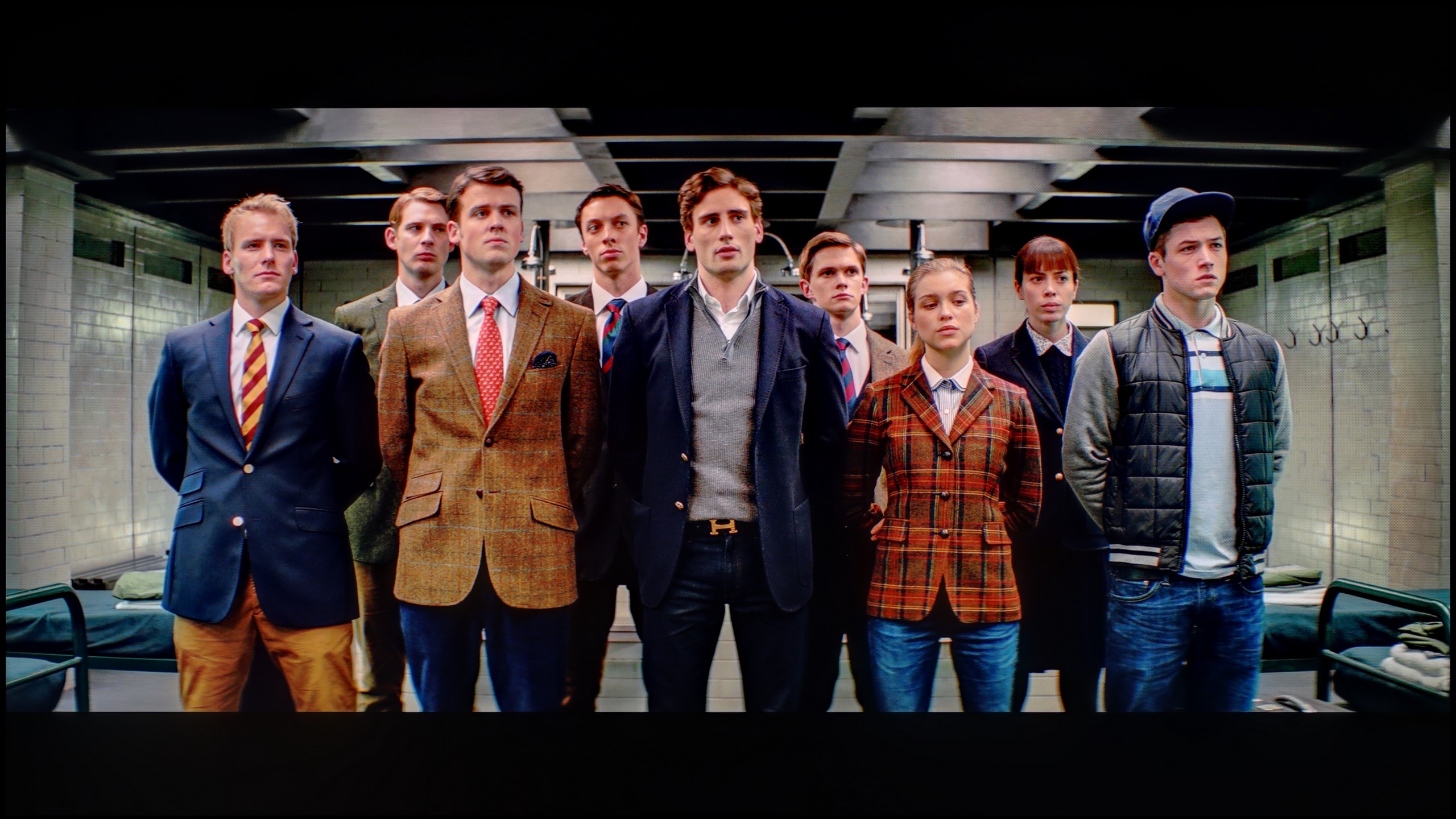
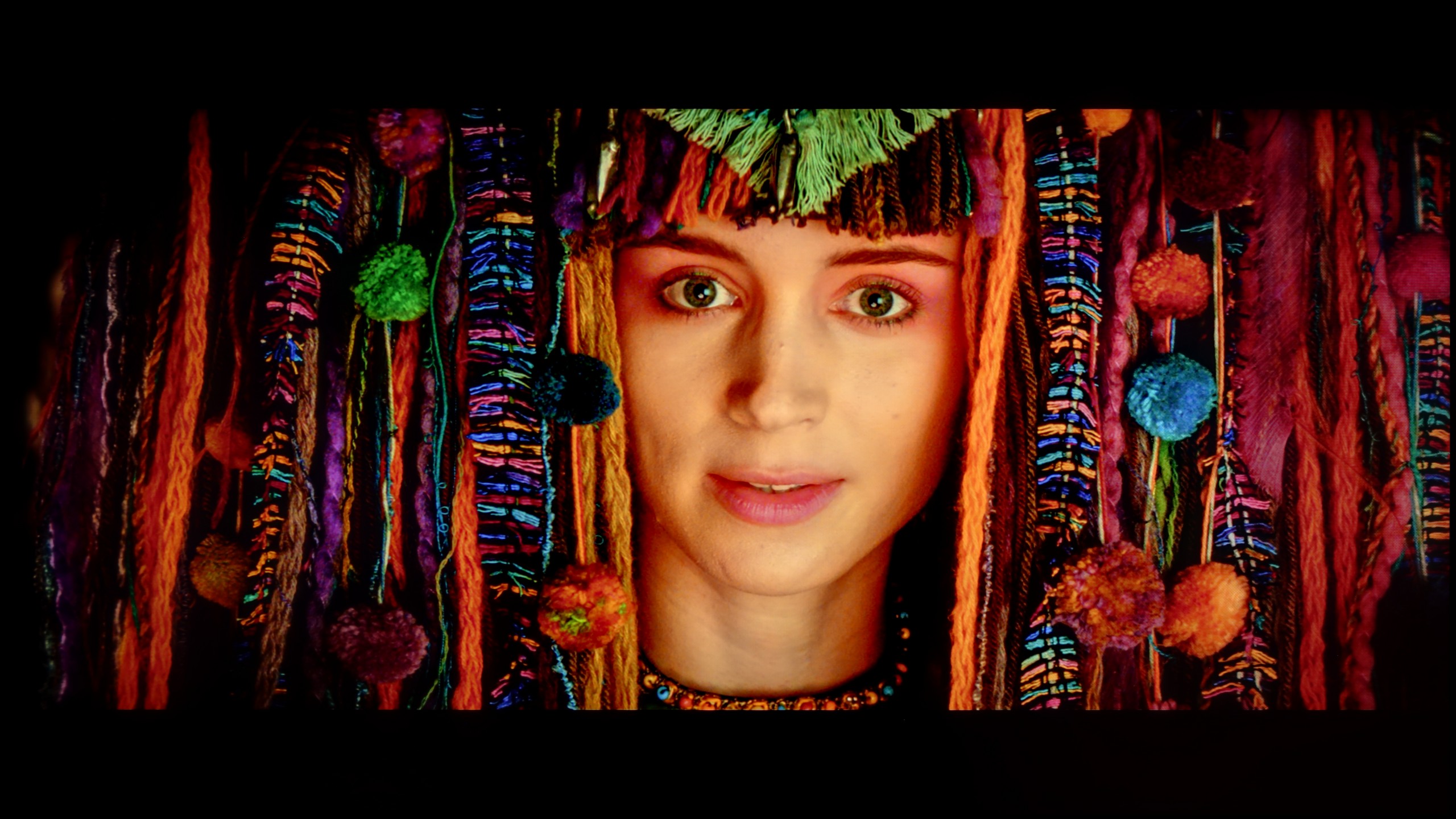

Of course, we wouldn't be ourselves if we didn't make adjustments to the white balance. After calibration, we managed to align the SDR signal to near perfection – older movies, YouTube content, and classic television looked almost perfect on the U8Q. This is truly an outstanding level that shows this model can do a lot if given a little help. Unfortunately, the situation is different with HDR content. The colors themselves aren't a major issue, but the biggest flaw of the U8Q remains the EOTF brightness characteristics. In practice, the TV tends to "blow out" beyond how the image should look in its original form. It's that slight "blown out" effect we saw earlier in comparisons with the best screens on the market. It's a bit of a shame that this characteristic can't be fully tamed – if we could maintain similarly good control over brightness in HDR as we do in SDR, we would have an absolutely reference-quality image.
After calibration, the TCL C7K showed itself in a really good light, especially when it comes to SDR content. We managed to tune the white balance, color gamut, and brightness characteristics so precisely that color errors on the ColorChecker palette dropped below a value of 2. For the uninitiated – this is almost a perfect result, which means that the image is very close to what the creators intended. Unfortunately, it looked worse with 4K HDR content. Although we were able to slightly calm the white balance and correct its previous errors, it is still evident that the television has some "MiniLED traits," especially in brightness management. When we checked how the C7K handles the EOTF curve on actual film scenes, and not just on synthetic test patterns, it turned out that the screen still tends to slightly brighten the entire image. This affects the overall experience – black loses some depth, and the image becomes less contrastive than it should be. Despite these minor shortcomings in HDR content, the overall reception of materials – especially in SDR – is really very good. After calibration, the C7K can display an image that can successfully compete with much more expensive models. Good color tuning, natural skin tones, and pleasant brightness make movie sessions and everyday content viewing more than satisfactory.
Smoothness of tonal transitions
8.9/10
8.6/10

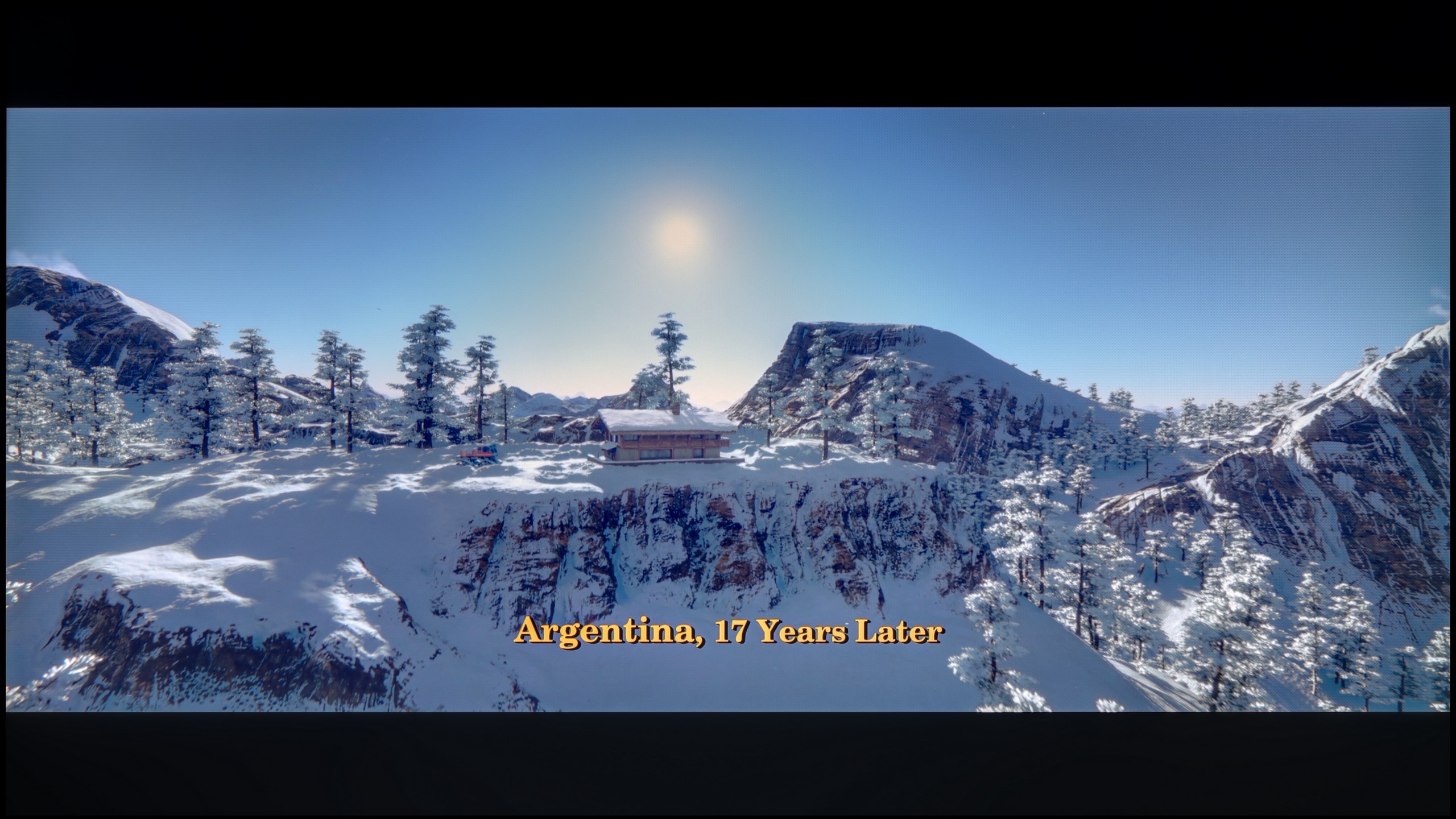


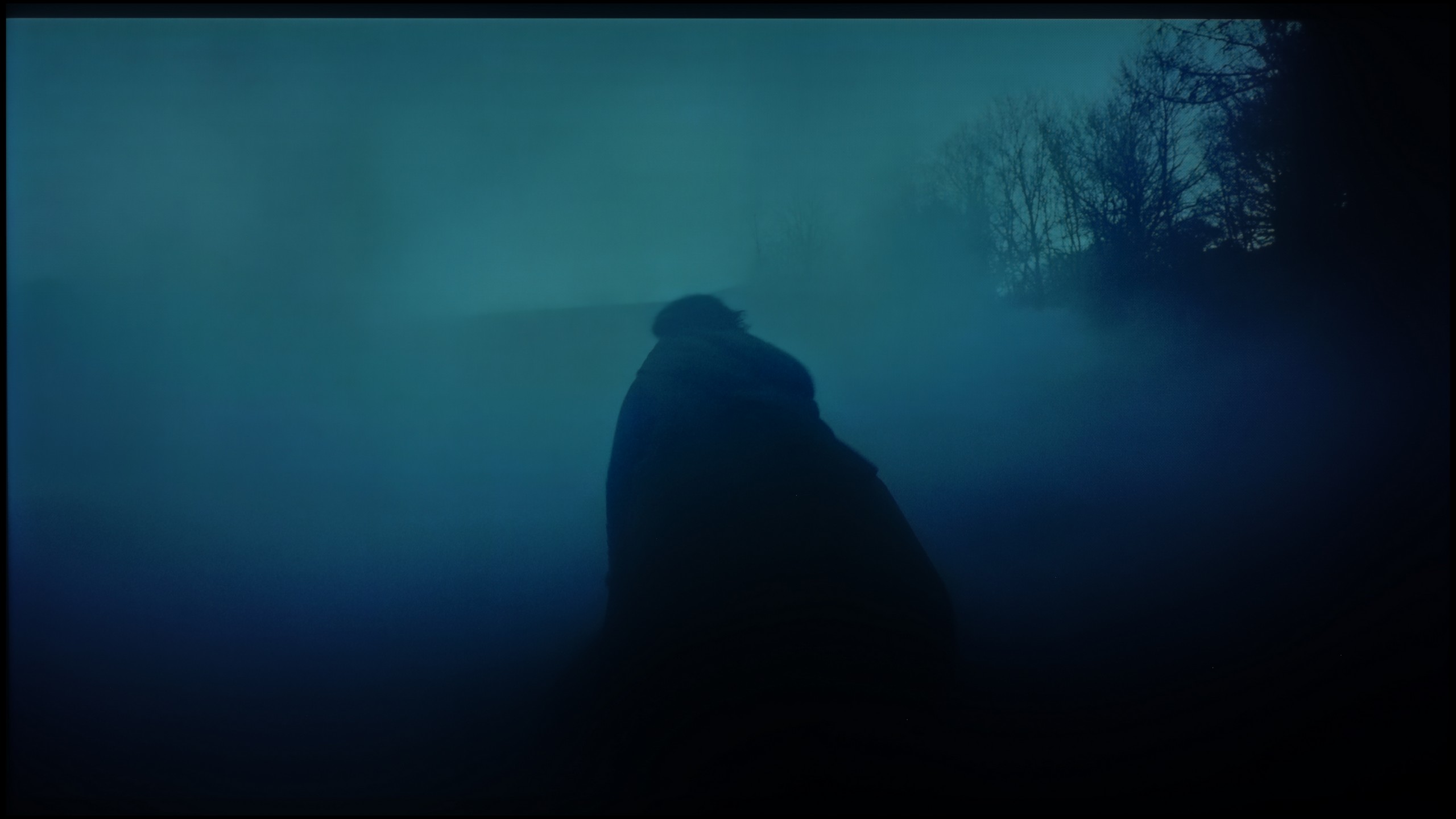
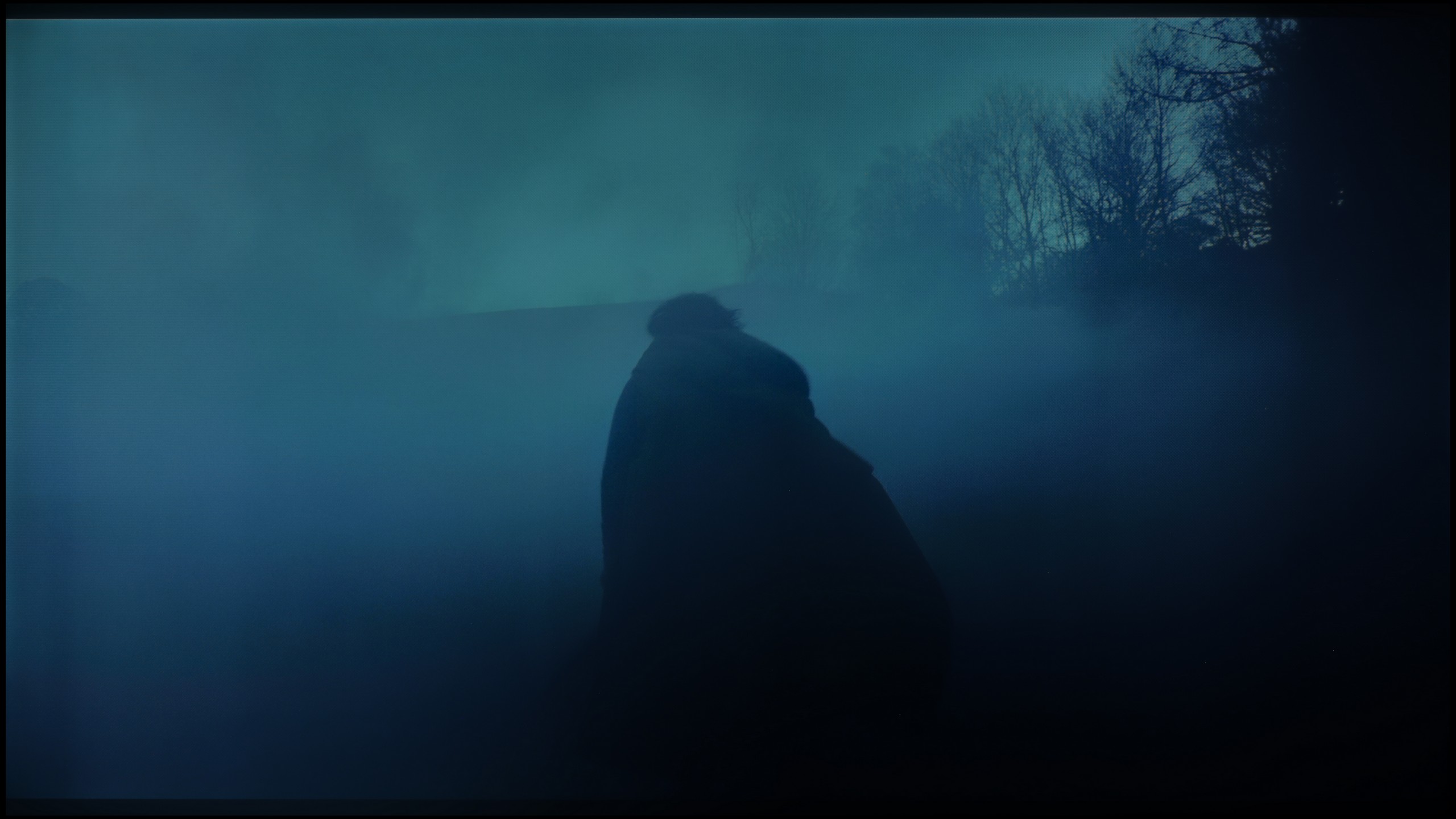
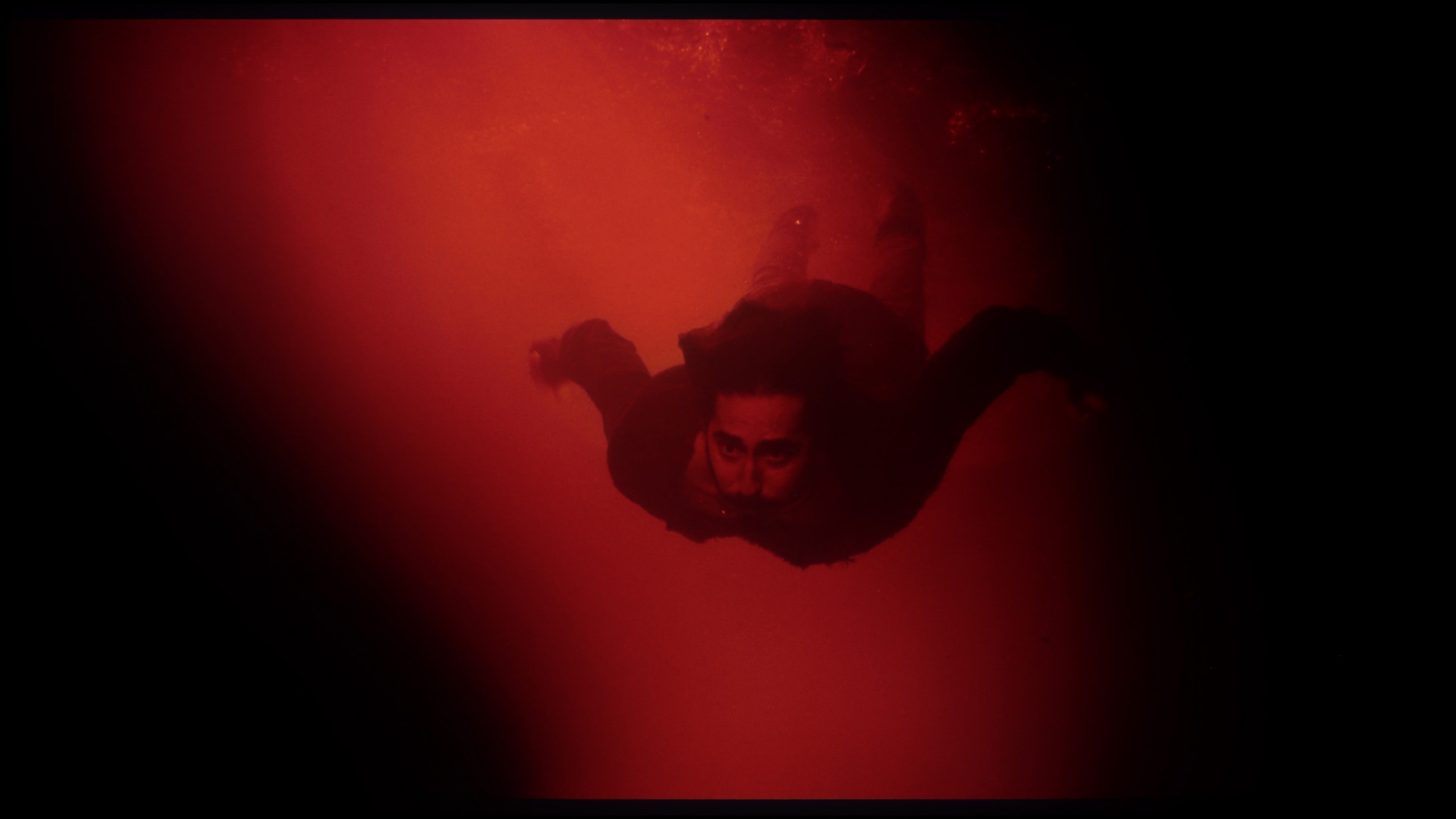
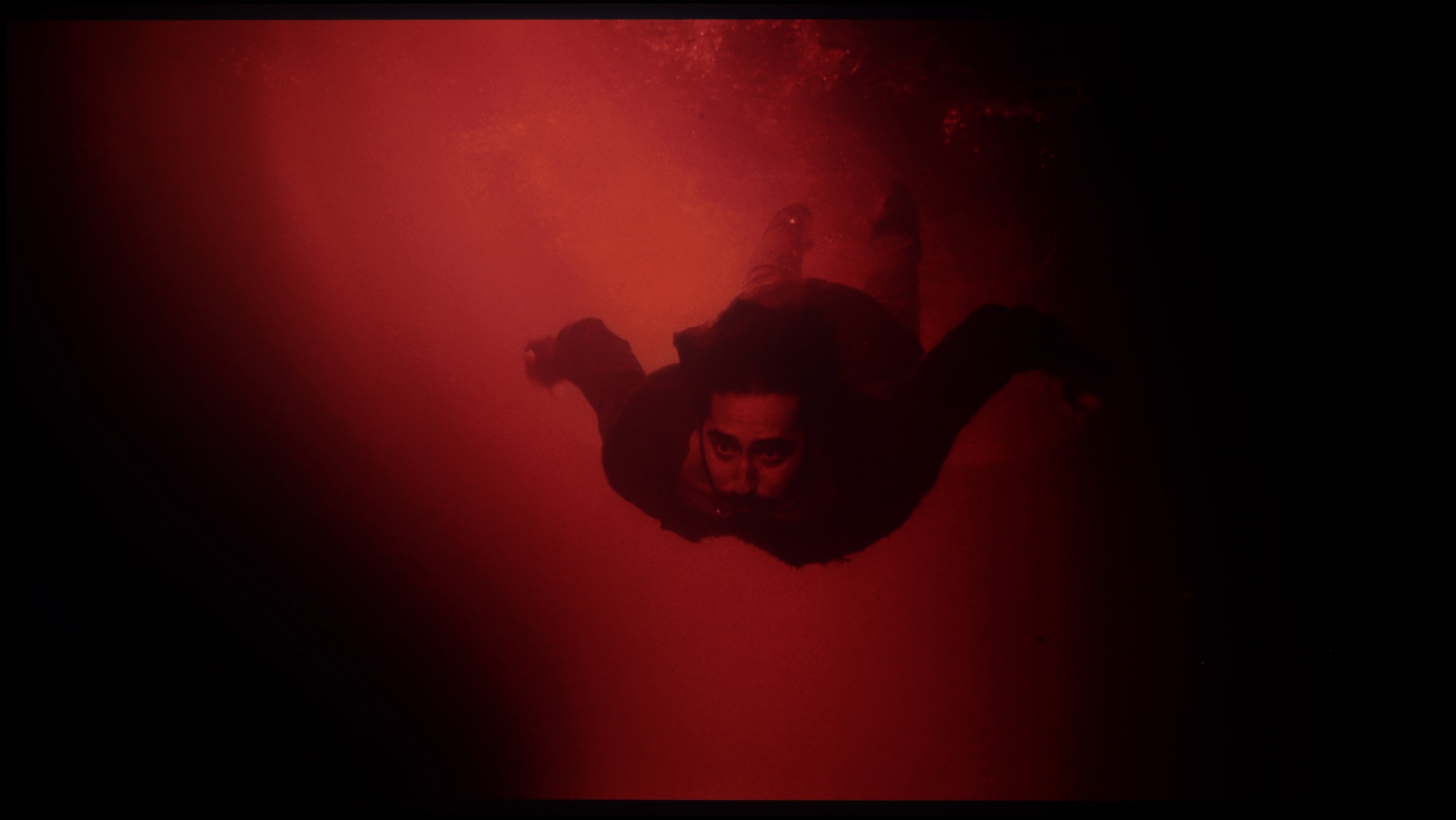




When it comes to the fluidity of tonal transitions, the Hisense U8Q really impressed us. Even in the darkest scenes, where usually other TVs show unsightly bands and ugly transitions, here the picture remains smooth and consistent. Nothing layers up, there’s no “stepping” effect – everything looks as it should. Similarly in brighter shots – it’s also very good. Sure, if we were looking through a magnifying glass, we might find some minor flaw, but in normal viewing, it’s hard to nitpick. Overall, it looks very, very good!
TCL C7K handles color gradation very well – in most tested scenes, the tonal transitions were smooth, and the colors blended together without visible outlines or an artificial “blots” effect. In everyday use, it’s hard to find anything to complain about – the image looks natural, without irritating transitions or digital artifacts. Certain limitations only appear in very dark tones – especially in a heavily muted gray palette, where the television may struggle to reproduce the perfect gradation. But that’s absolutely understandable, as even many significantly more expensive models in this range simply give up. Fortunately, these situations are rare and do not significantly affect the overall perception.
Image scaling and smoothness of tonal transitions
8/10
5.5/10
Smooth transition function
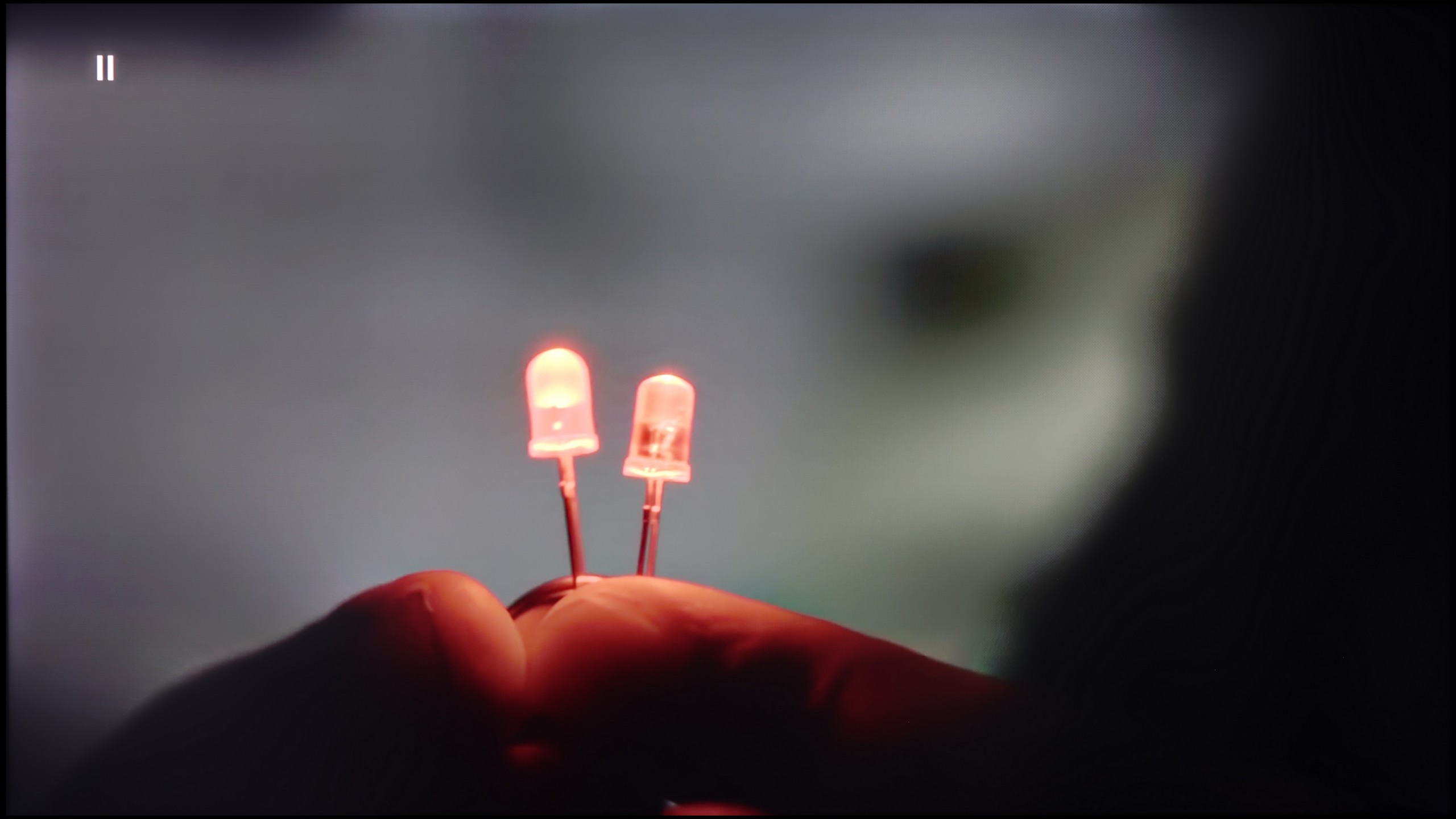
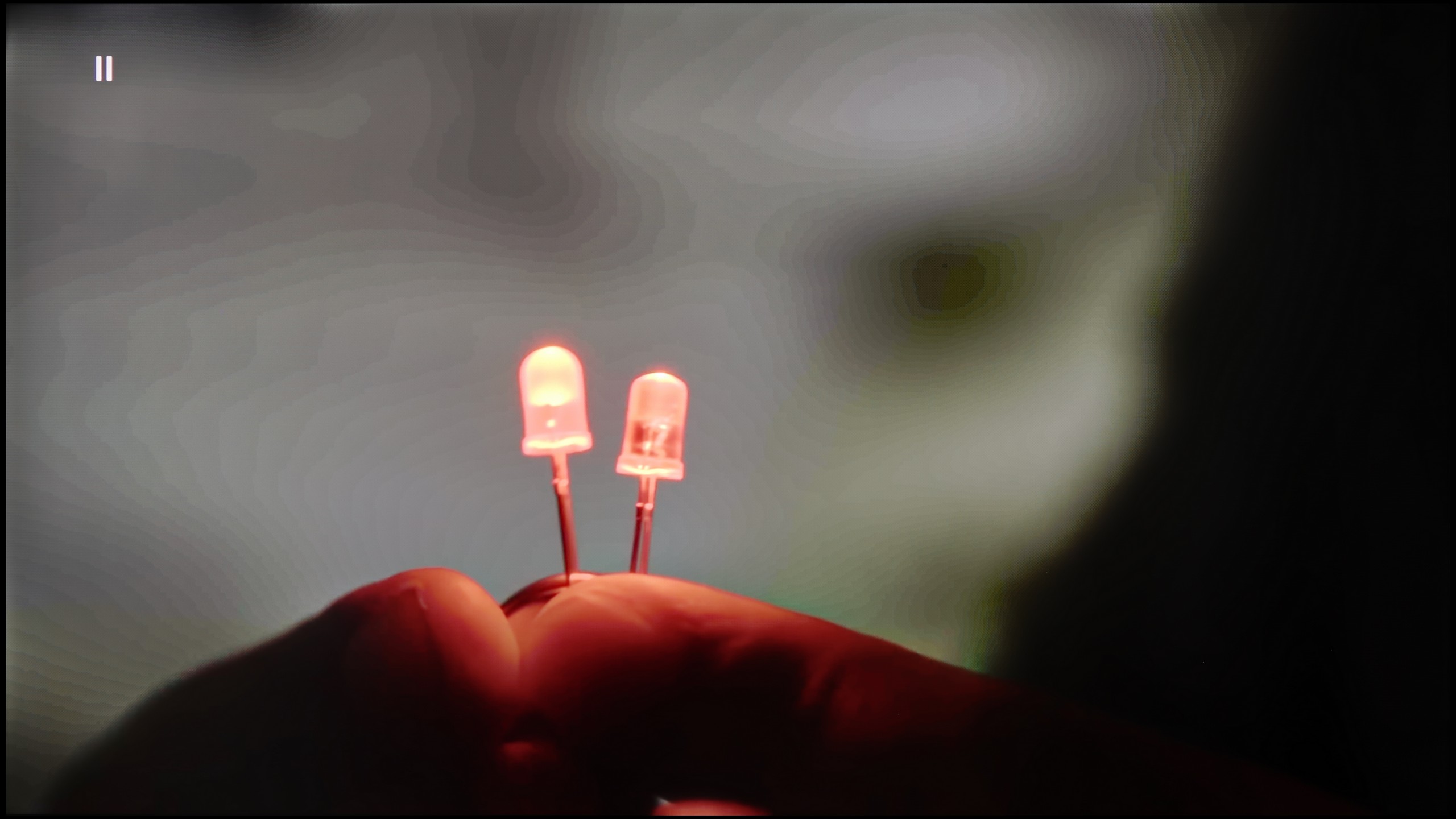
Image without overscan on the SD signal


The Hisense U8Q handles lower-quality materials quite well. The TV can smooth out tonal transitions thanks to the "Smooth and Gradient Picture" feature – it works best when set to Medium. At that setting, it nicely reduces unwanted bands and unevenness in the image, but importantly, it does not remove cinematic grain or fine details.
The upscaling itself is also at a good level. Images from lower resolutions look smooth and soft, at times even a bit too much – we get a plastic effect that may not appeal to everyone. Fortunately, this can be easily adjusted with the sharpness slider to fit personal preferences.
TCL C7K features a function that, according to the manufacturer, is supposed to smooth out unwanted color transitions – something like a rescue for less successful tonal changes. It's called "Gradual Smoothing" and... well, it sounds ambitious, but in practice, it works very poorly. Regardless of whether we set it to low or high, the difference is minimal. Worse still – the function can cut out elements from the image that should remain. Fortunately, film grain remains untouched, so at least it doesn't smooth everything indiscriminately, but still – it's better to just turn this option off.
When it comes to scaling lower-resolution content, it's already better. SD and HD materials look quite decent, although sometimes we felt that the image loses sharpness and becomes too soft – as if something took away its clarity. Fortunately, with very low sources (e.g., 576p), there was no overscan effect, meaning the image was not artificially cropped – everything fit on the screen as it should.
Blur and motion smoothness
7.6/10
8.1/10
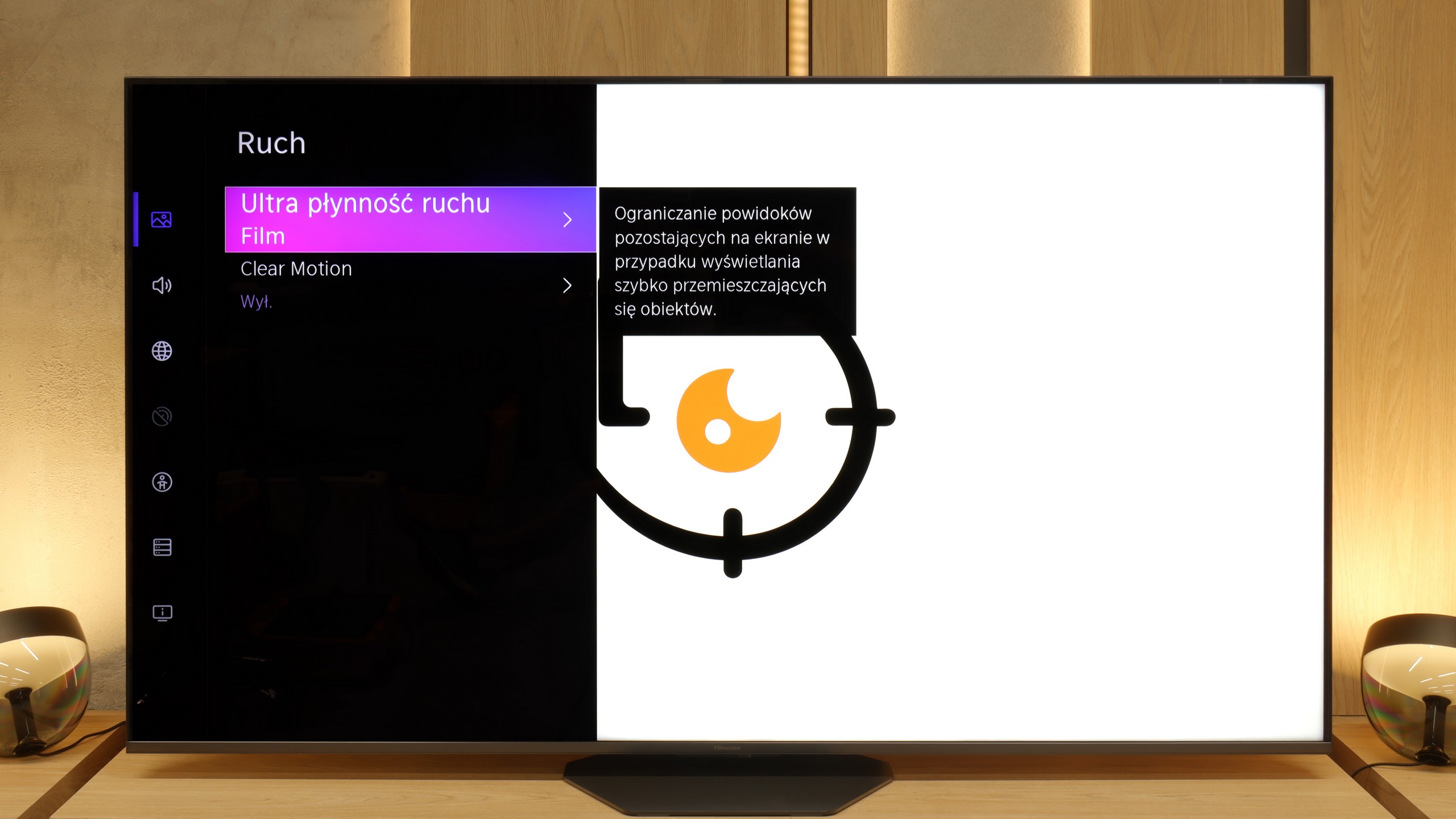
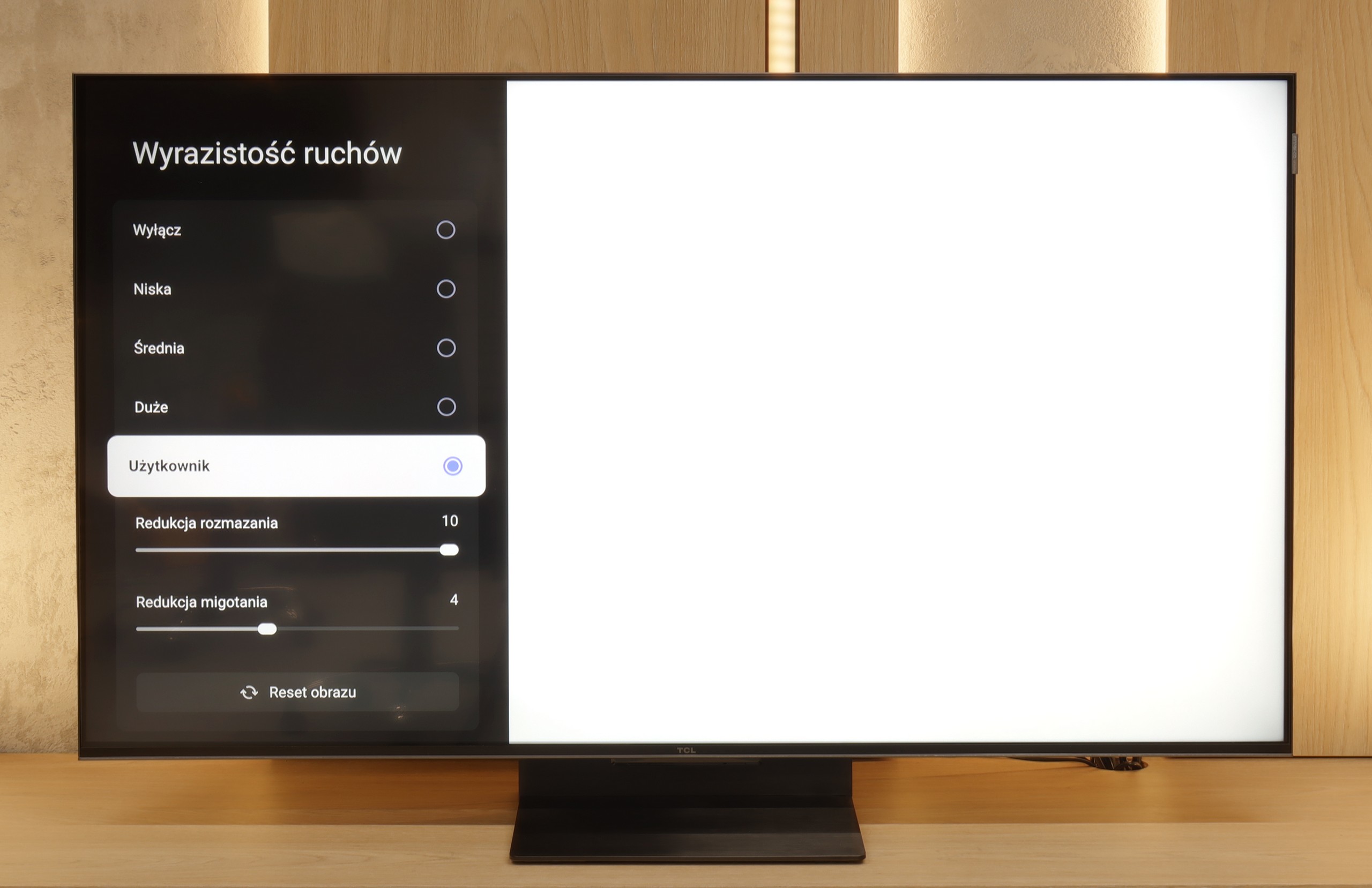
Blur (native resolution, maximum refresh rate):

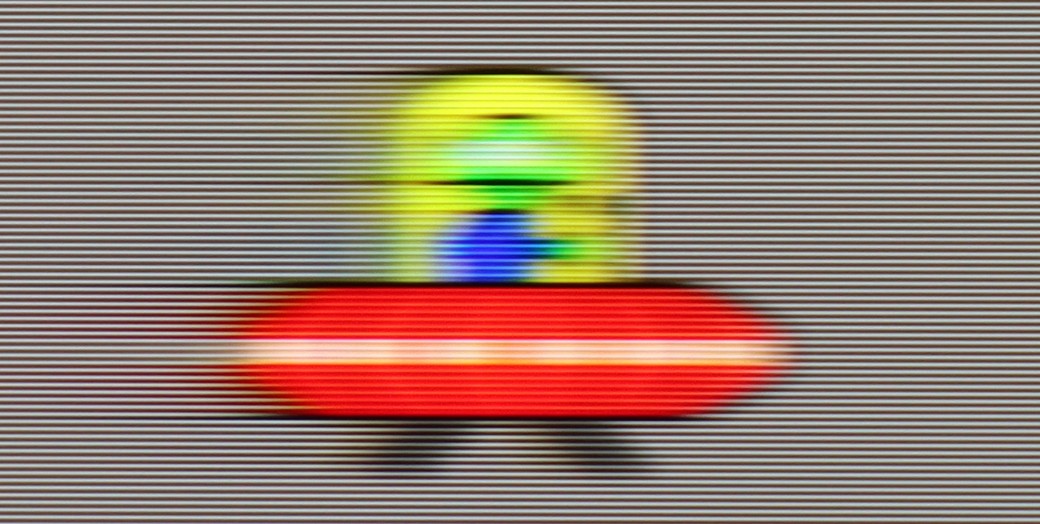


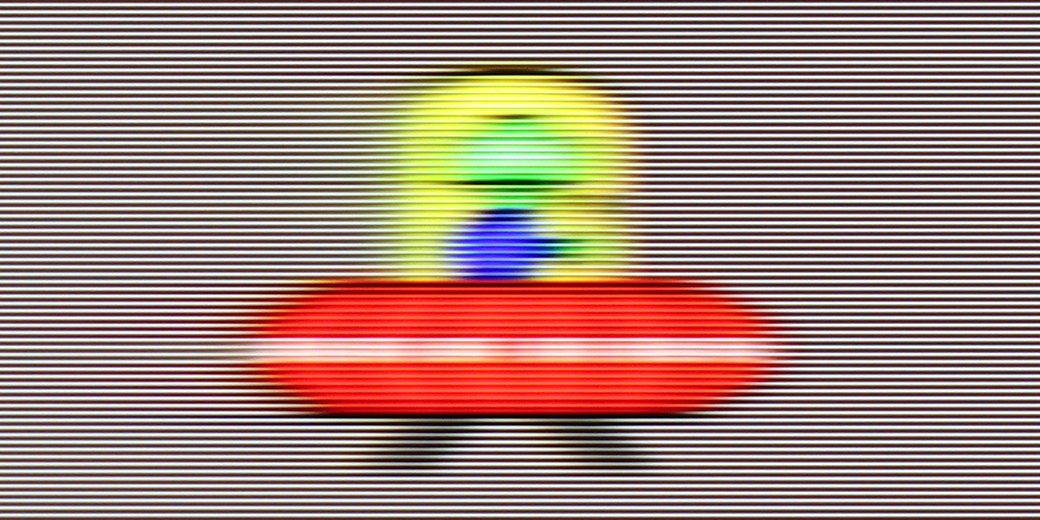
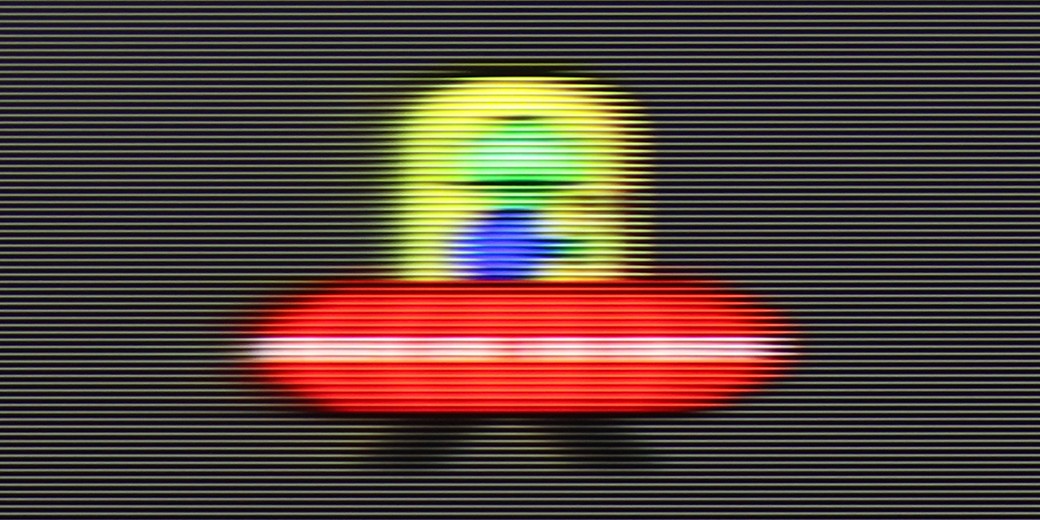
Blur (BFI function enabled):






Blur (1080p@288Hz):

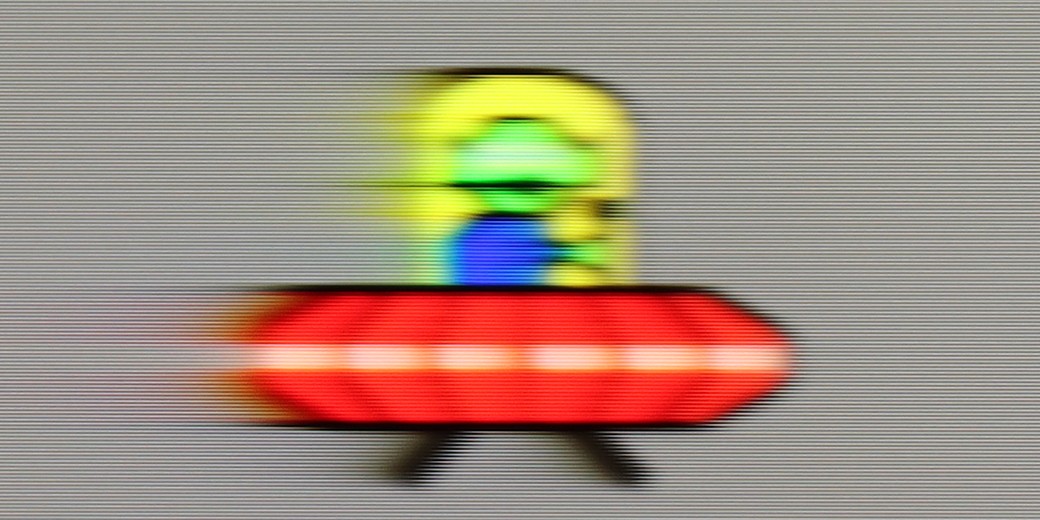
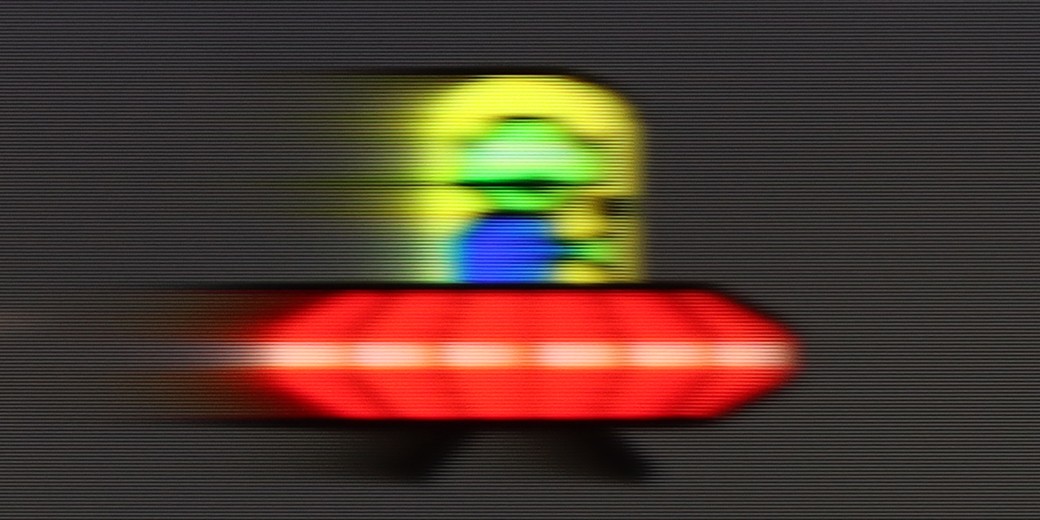
Blur (4K@144Hz):



Hisense U8Q has a display that can refresh the image up to 165 Hz in 4K resolution. In practice, this will mainly be utilized by PC gamers, but as they say – it’s better to have it than not 😊. For movies and series, we have a built-in smoothness enhancer called Ultra Smooth Motion. In the settings, it can be easily adjusted to personal preferences – whether we want more of a "cinematic" frame rate or a smooth, theatrical spectacle.
The TCL C7K handles motion fluency really well. The panel used in it offers a refresh rate of 144 Hz, which in itself suggests that this TV is something more than just an ordinary "60 Hz" panel. Moreover, if we connect the C7K to a computer and set the resolution to Full HD. But we'll write more about that in the paragraph about gamers and PC collaboration. Back to everyday use – both sports and movies look very good here. Thanks to the fast panel and well-functioning motion smoother, the C7K is great for watching matches, but also for movie screenings. In the menu, we find two sliders – blur reduction and flicker reduction – which allow you to tailor the smoothness effect to your own preferences. At lower settings, we get a more cinematic effect, with a slight stutter in motion. At higher settings – the image becomes more theatrical, smooth to the point of exaggeration. Everyone can set it up according to their liking.
Console compatibility and gaming features
8.5/10
9.8/10
- ALLM
- VRR
- VRR range48 - 288Hz48 - 240Hz
- Dolby Vision Game Mode
- Correct implementation of HGIG
- 1080p@120Hz
- 1440p@120Hz
- 4K@120Hz
- Game bar
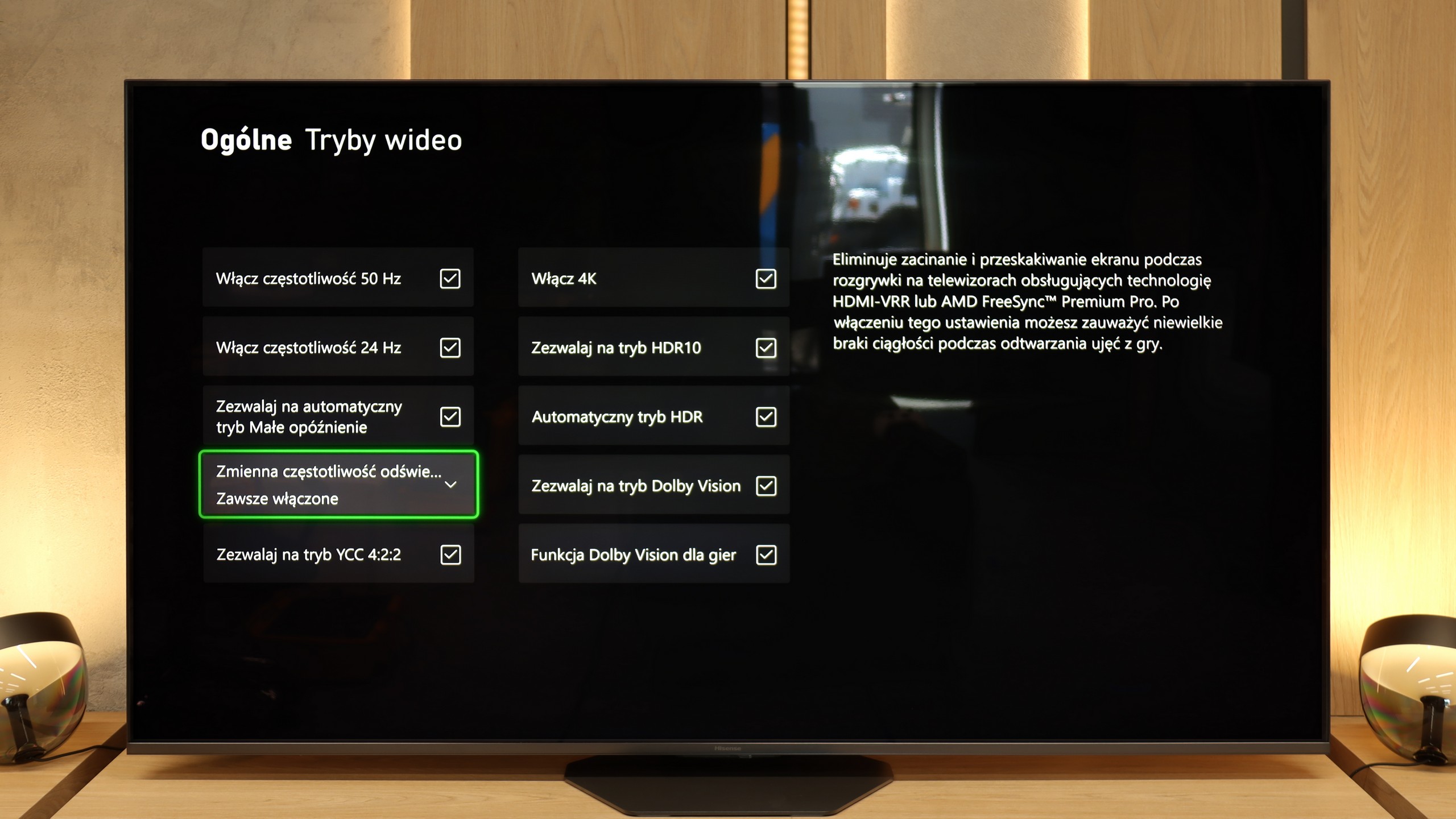
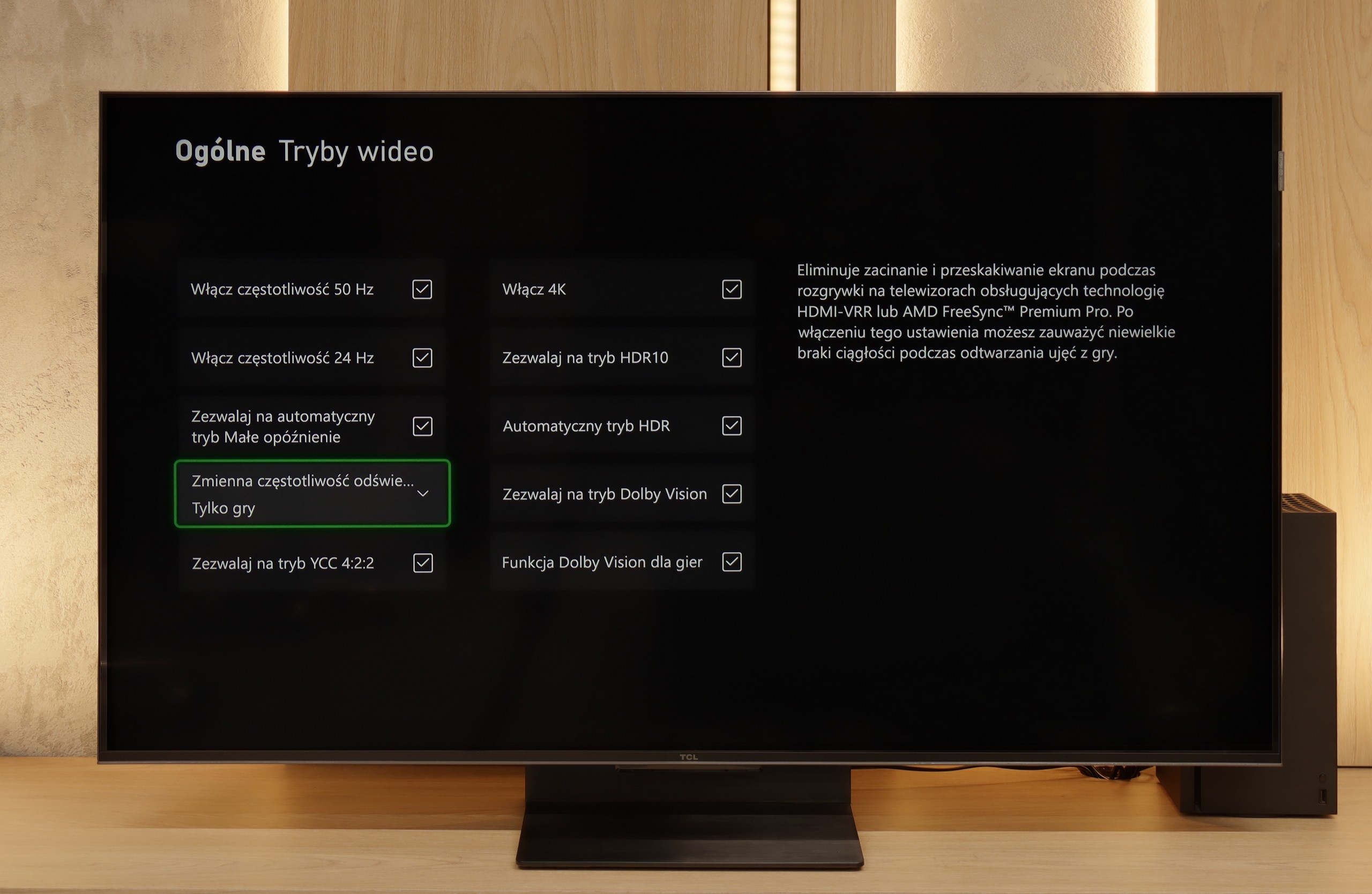
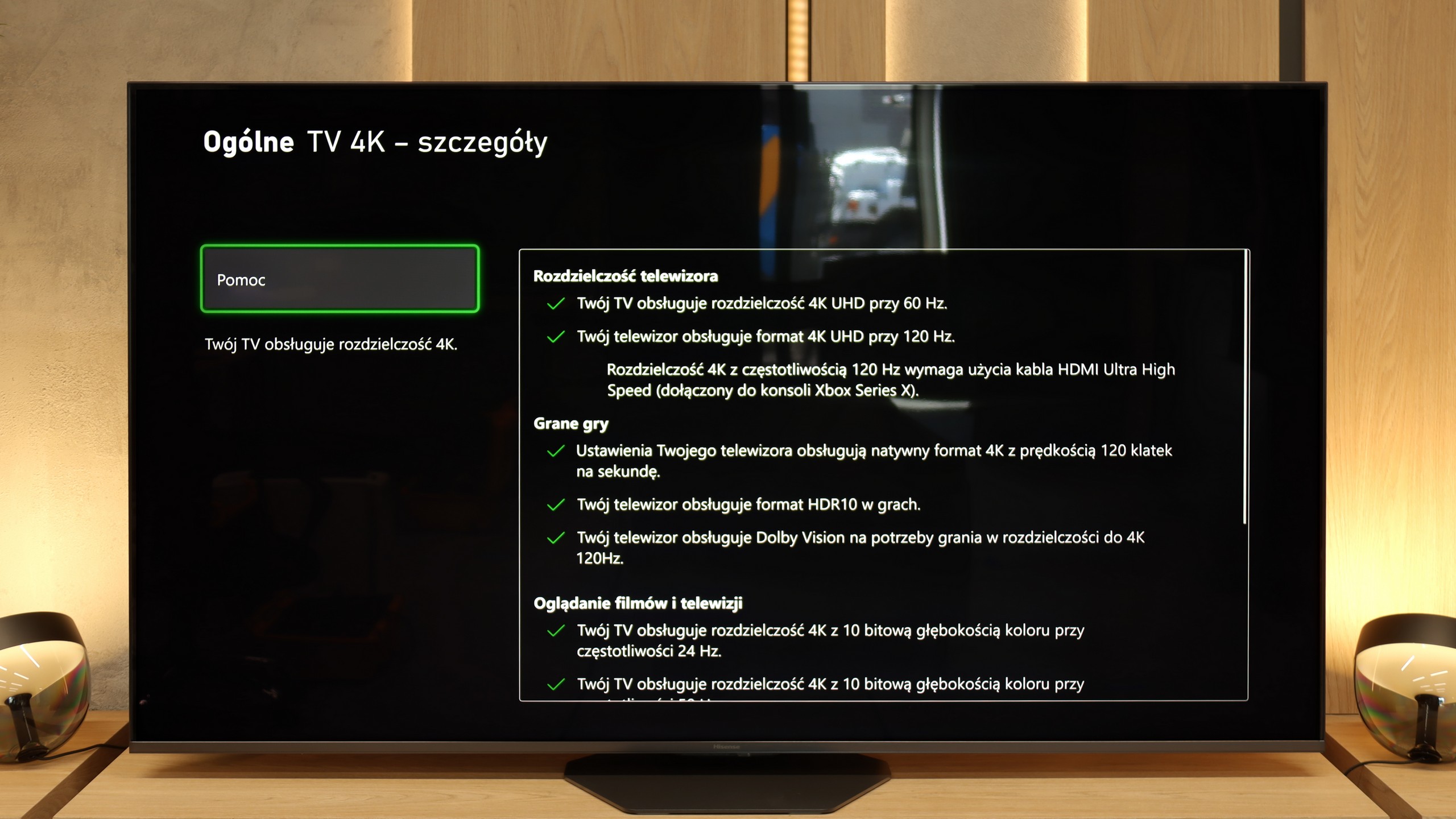
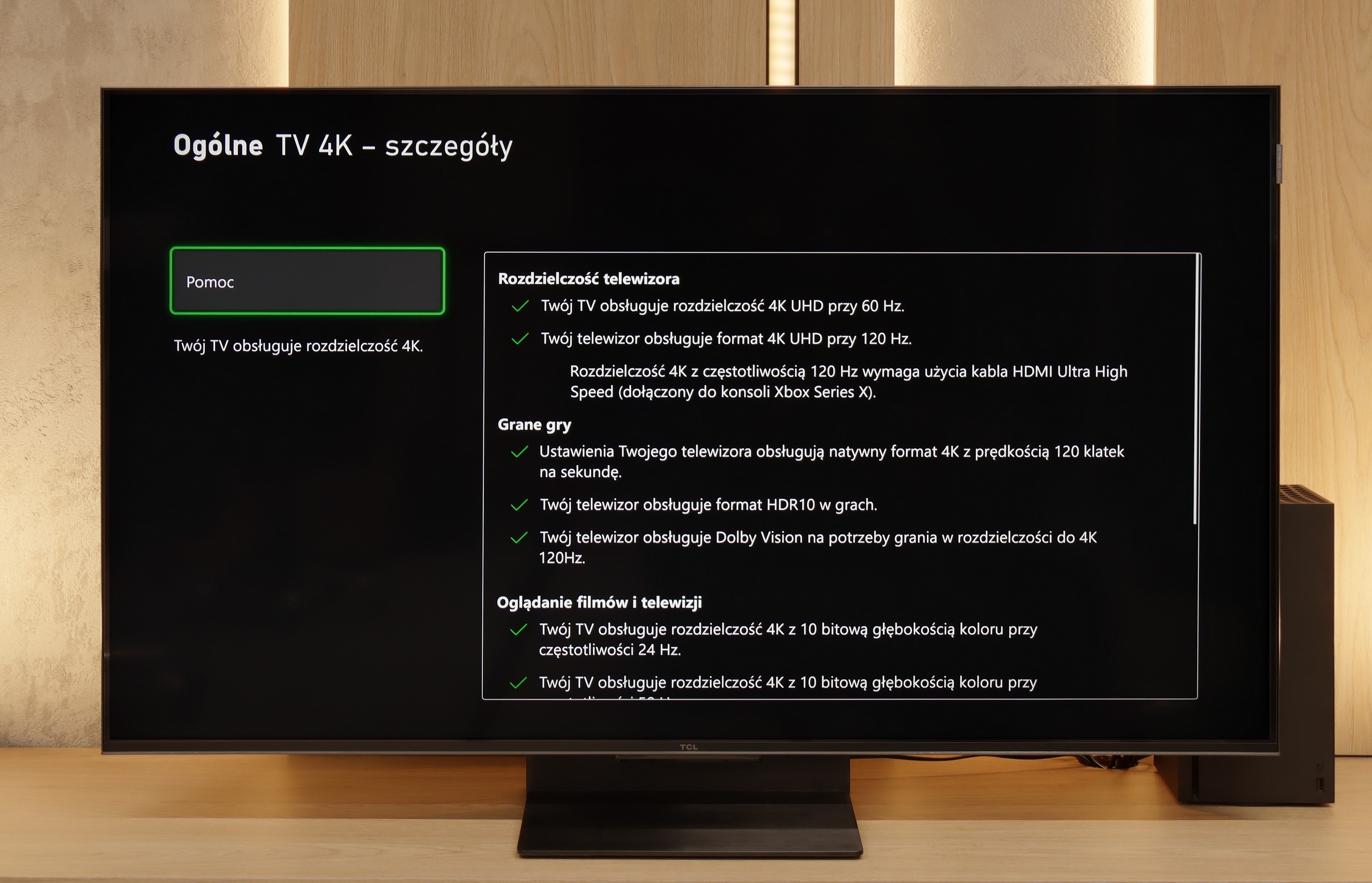
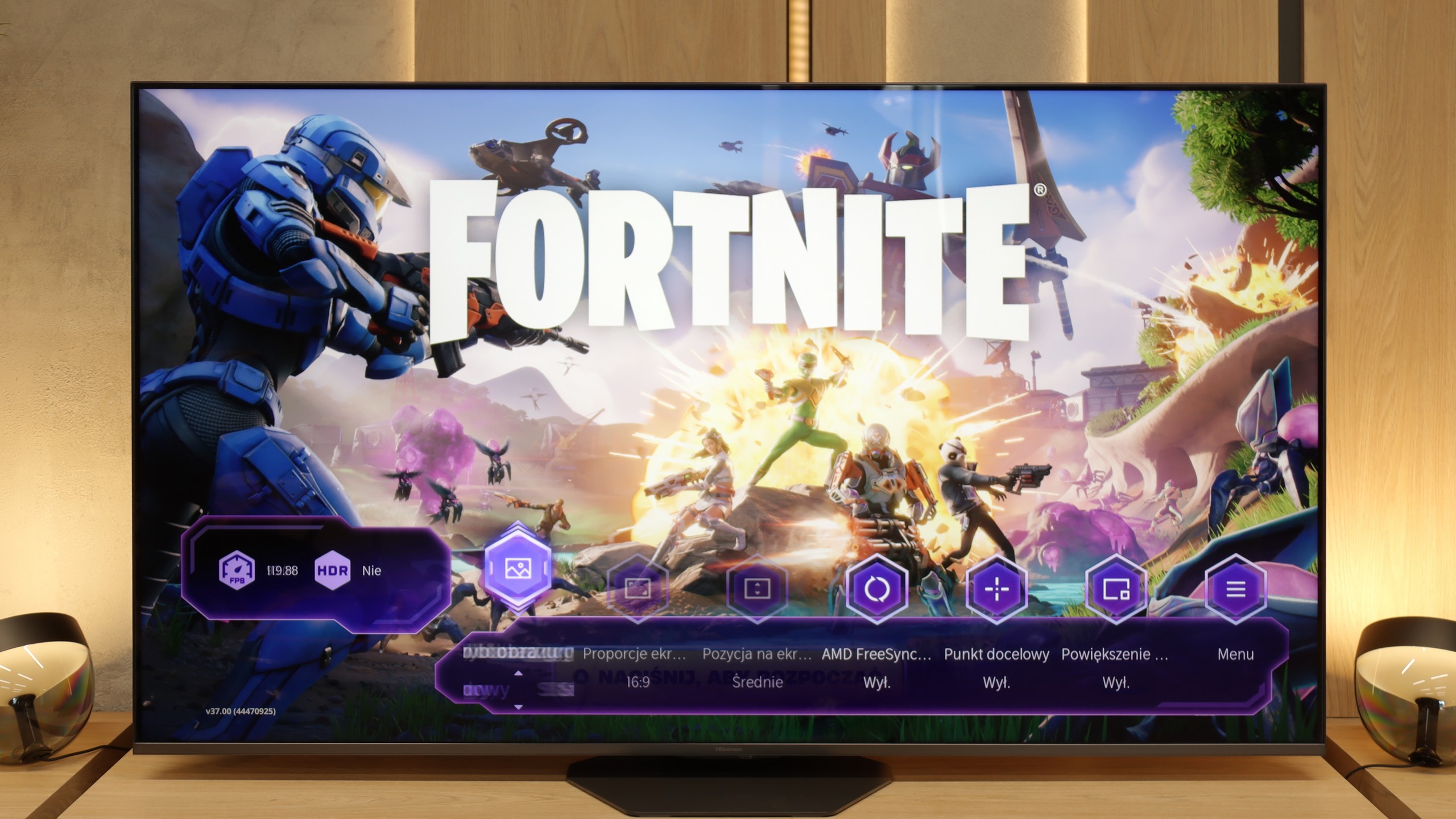
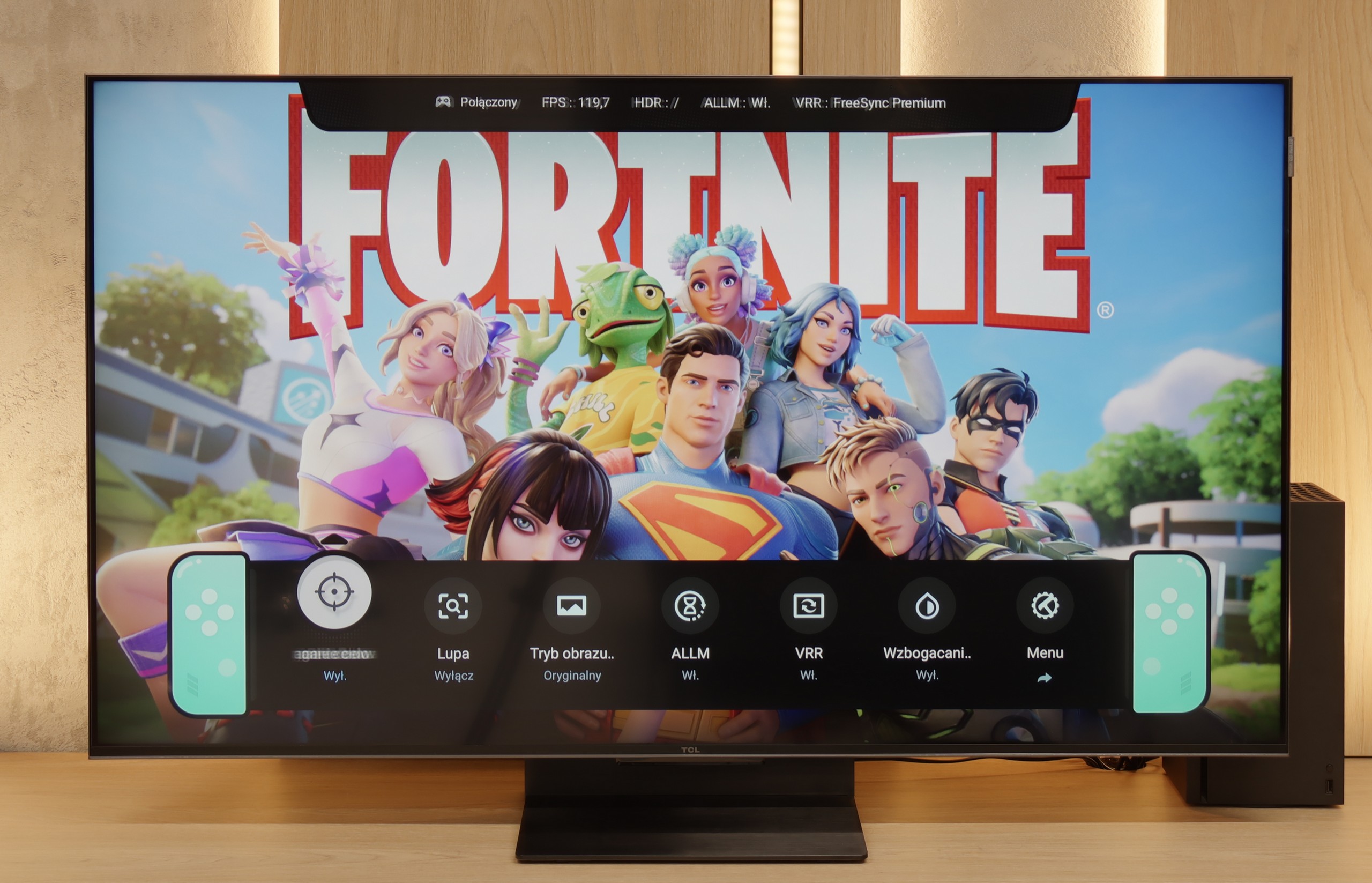
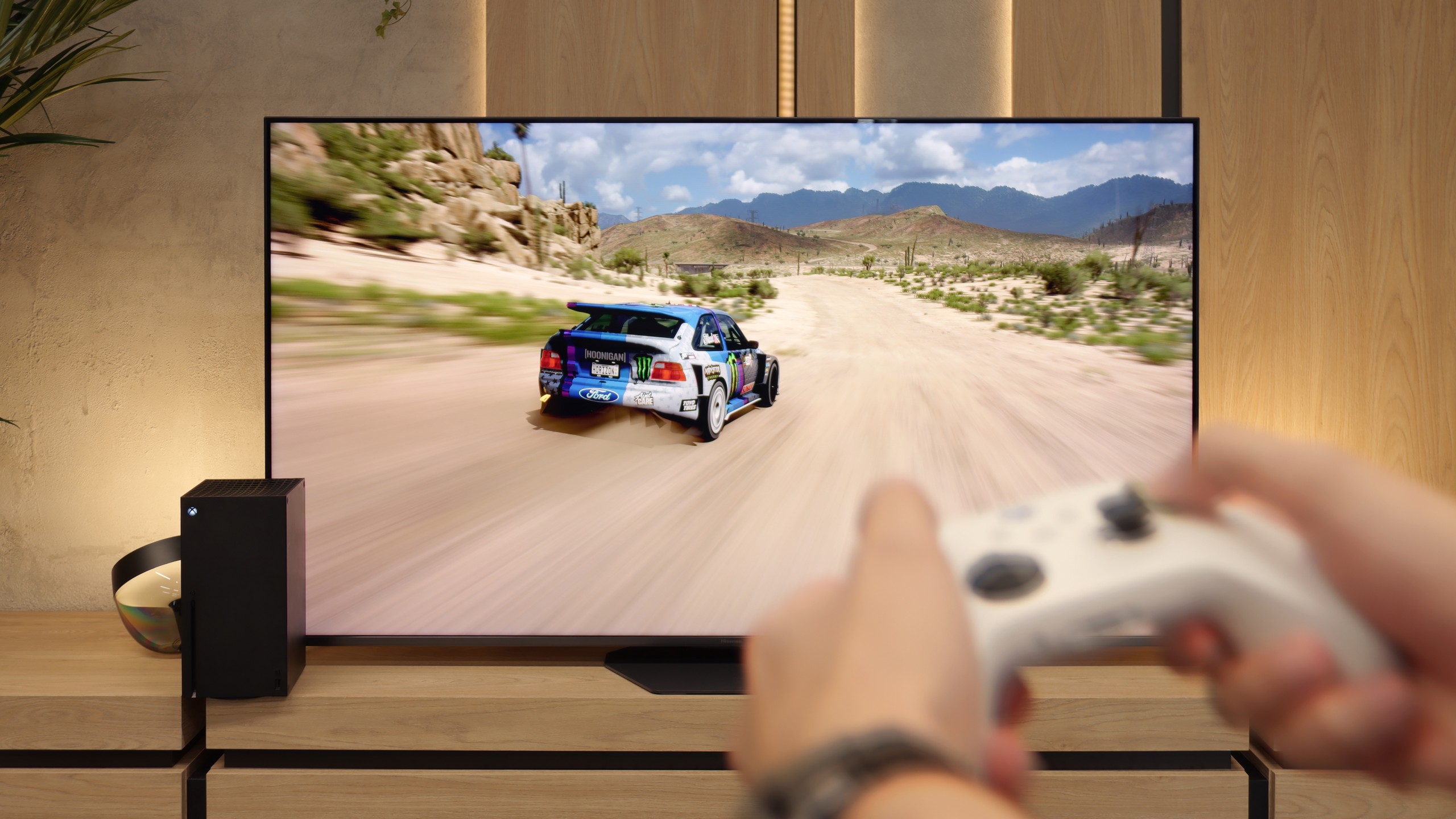
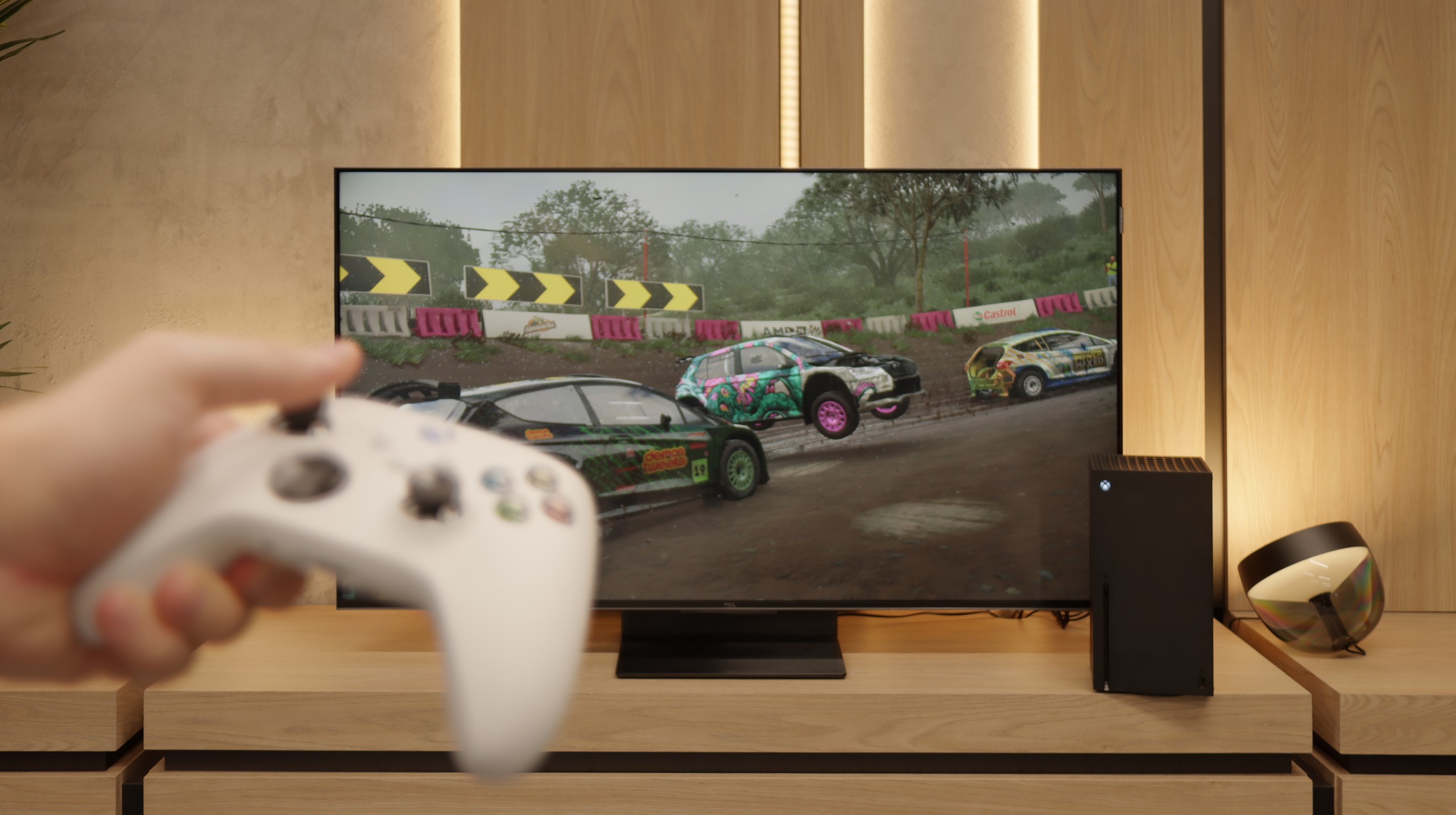
In terms of features, the Hisense U8Q has practically everything one could expect from a modern gaming television. Thanks to the new processor, the manufacturer has managed to implement as many as three HDMI 2.1 ports, so there is no problem connecting multiple consoles or a computer. In addition, it includes all the key technologies – Game Bar with parameter monitoring, variable refresh rate (VRR), automatic low latency mode (ALLM)... in short, a complete set.
But as is often the case with Hisense, it falls a bit short of perfection. The biggest drawback remains the lack of support for the HGiG format, which allows you to adjust the television's brightness to the console and get the most out of HDR in games. It's a shame because if this feature were included, we would have a device practically made for gamers. As it stands, the U8Q remains "just" a very good choice 😉
TCL C7K is a television that on paper looks like the dream equipment for gamers – and most importantly, it holds up well in practice. First, the good news: we have two full-bandwidth HDMI 2.1 ports, so we can easily connect both a console and a computer, taking full advantage of their capabilities. The panel itself supports a refresh rate of 144 Hz, which provides a significant advantage in dynamic games. Additionally, it comes with a full suite of gaming features: VRR (variable refresh rate), ALLM (automatic low latency mode), and support for Dolby Vision in games. There's also an HGiG mode that allows for HDR effects consistent with the creators' intentions. GameBar, which is an informative bar for the gamer. It operates quickly, looks clear (like the Nintendo console👌), and shows what’s most important: the current frame count, VRR status, and even HDR parameters.
Input lag
9.8/10
9.6/10
SDR
HDR
Dolby Vision
The Hisense U8Q really performs well in terms of signal delay. In 120 Hz mode, the input lag is around 10 ms, and for 60 Hz content, it hovers around 18 ms. These values place it among the fast TVs, and in practice, it's hard to have any major objections. The response is instantaneous, and controlling a character or a car on the screen happens without noticeable delays. Whether someone is playing dynamic shooters or more relaxed narrative titles, the U8Q will perform excellently.
When it comes to delays, the C7K gives no reason to complain. In games at 120 Hz, the input lag is around 10 ms, which means the television responds really quickly. Interestingly, even in Dolby Vision mode, the result is very similar, which is not always the standard. Good job, TCL. At 60 Hz, the lag naturally increases a bit, but that's completely normal and applies to virtually every television with a refresh rate of 120 Hz or higher. The most important thing is that everything still operates smoothly and there’s no feeling that something is unresponsive to our actions.
Compatibility with PC
8.4/10
8.4/10
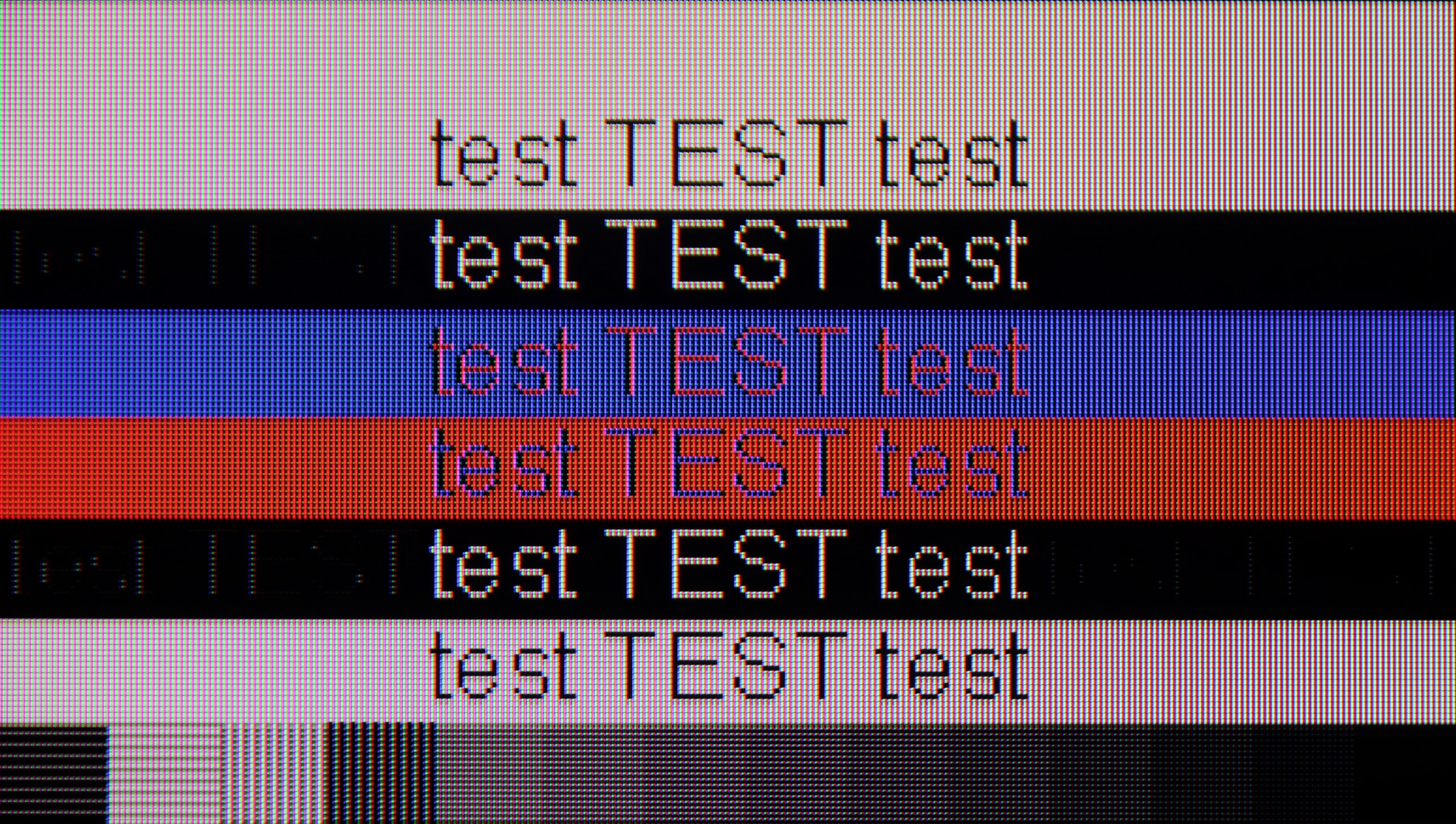
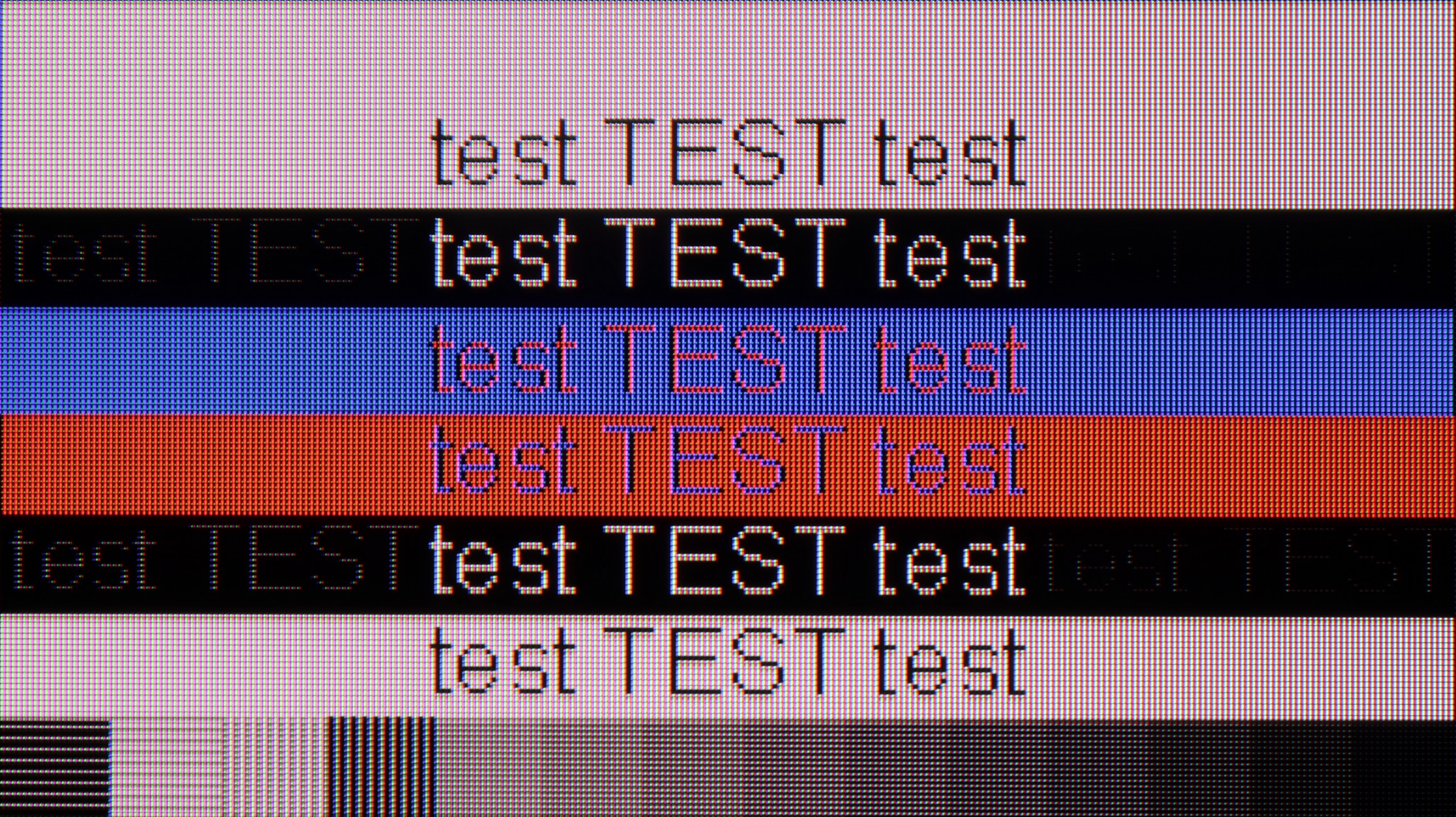
As we mentioned regarding the features for gamers – Hisense U8Q also communicates well with computers. The 4K panel with a refresh rate of 165 Hz is impressive on its own, and at Full HD resolution, it can even boost to 288 Hz. This is great news for e-sports fans, where speed of reaction matters most, rather than the highest image quality. Additionally, it supports G-Sync and FreeSync, so gameplay is smooth, without stutters and annoying frame tearing.
A pleasant surprise is the presence of a USB-C port with DisplayPort functionality for laptops or even phones. This is a true novelty in televisions, and it's quite possible that Hisense will be a pioneer here, setting the direction for the competition.
When it comes to working with text, we must mention one small inconvenience. Although the U8Q correctly handles chroma 4:4:4, it has issues displaying very thin, horizontal fonts. This means that some subtitles or interface elements may be hard to read. Probably no one buys this model with office work in mind, but if someone were to have such a plan – it’s worth keeping this in mind.
If we intend to connect the C7K to a computer – especially for gaming – there’s really a lot to play for. We have 4K at 144 Hz, which sounds great on its own, but if we lower the resolution, the TV can display even 280 Hz. In e-sports, where every fraction of a second counts, this really makes a difference. Additionally, it supports G-Sync and FreeSync, so no matter what graphics card we have – the image will be smooth, without any stuttering or tearing.
However, if we plan to place the C7K on a desk and use it like a monitor, it’s a bit less "rosy." Yes, it supports chroma 4:4:4, so the fonts should be sharp, but with very dark letters, there’s a slight blurriness and dimming of the edges. It's not something that immediately stands out while gaming or watching, but when working with text – it can be distracting. In everyday use – rather without concerns, but if we plan to place 50 inches a meter from our face, it’s worth keeping this in mind.
Viewing angles
3.2/10
3/10
In terms of viewing angles, the Hisense U8Q performs average – typical for a VA panel. It's a classic compromise: in exchange for much better black levels and contrast than with IPS panels, we have to accept that viewing from a larger angle doesn't look as good anymore. Colors begin to lose intensity, and the image gets slightly brighter. For a viewer sitting directly in front of the television – it's a dream. For someone who sits more to the side – not quite as much.
There are no surprises here – the C7K has classic viewing angles for a VA panel. That is: sitting directly in front – it’s great. The colors look good, the contrast is strong, everything is in place. But just slightly shifting to the side begins to worsen the experience – the image loses saturation, blacks turn gray, and the overall impression suffers a bit. So if we plan to watch together with several people or have a couch that occupies half the living room – it’s worth seating everyone more centrally. You can watch from the side, but don’t expect miracles – it’s just a characteristic of VA panels.
Daytime performance
8.2/10
6.4/10
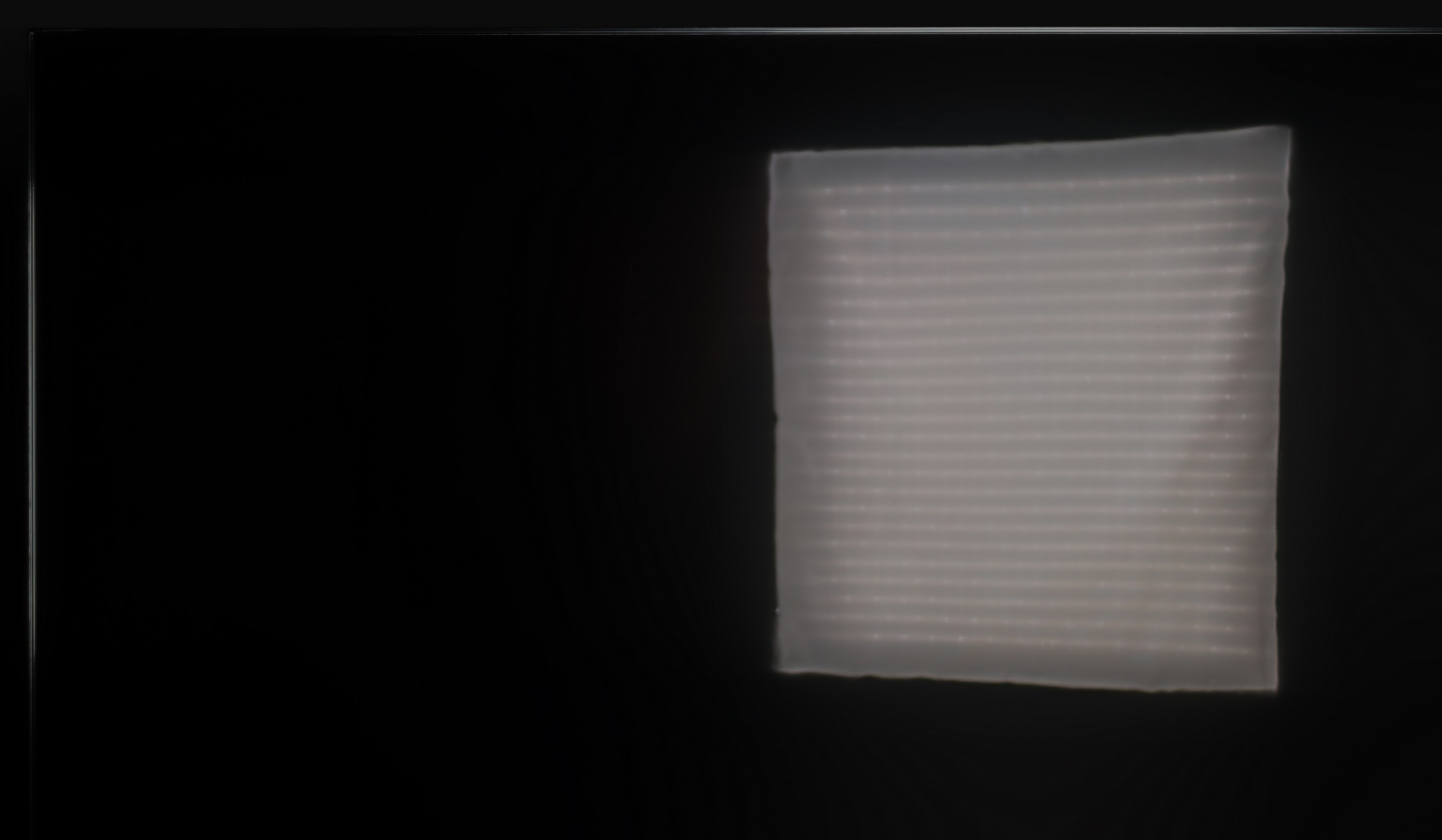
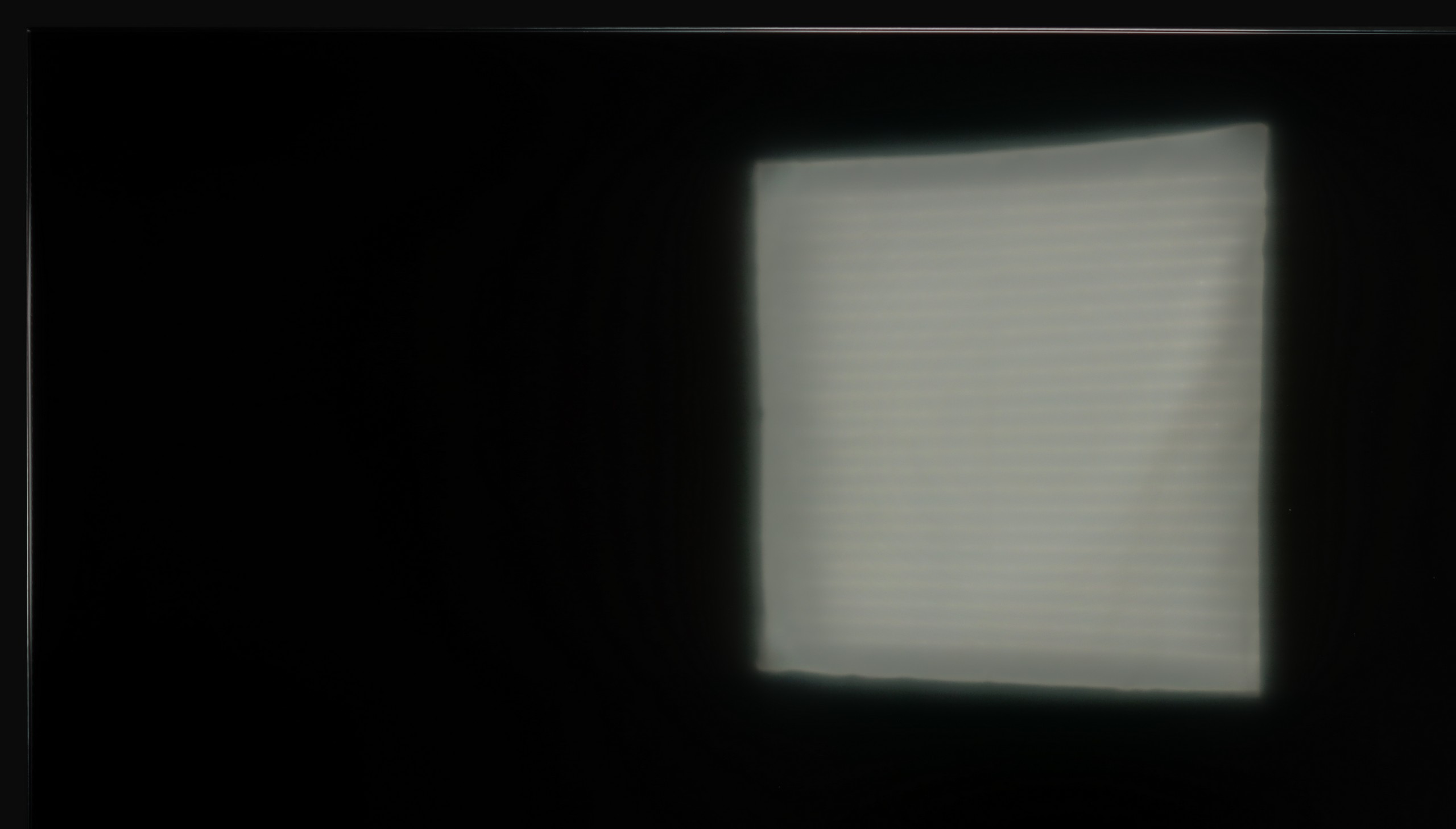


Panel brightness
Average luminance SDR
TCL C7K / QM7K 55"-85": 529 cd/m2
Hisense U8Q: 914 cd/m2
Hisense has opted for a new anti-reflective coating here called Anti-Reflection PRO. It is designed to improve viewing comfort in difficult lighting conditions – and it actually does the job. Reflections do not disappear completely, but they are well controlled and do not interfere with everyday viewing. However, the highlight of the program is the brightness in SDR – around 1000 nits! This is a result that would make top super premium models proud. As a result, the U8Q performs excellently in sunlit rooms and can confidently be considered one of the better TVs for daytime viewing.
Fortunately, the TCL C7K performs quite well in a bright room. The applied panel has a satin finish that effectively suppresses reflections, making it so that even on sunny days, we don’t have to worry about reflections from lamps or windows. Importantly, the colors maintain their intensity and do not wash out, as can happen with weaker matte panels. Regarding brightness itself, the average for content like YouTube or regular television reaches a little below 500 nits. It’s not a record-setting result— for example, the MQLED85 (C765) performs better in this regard. However, for everyday watching during the day, it should work without major issues, as long as we don’t plan to place it opposite a south-facing window without curtains.
Panel details
Subpixel Structure:
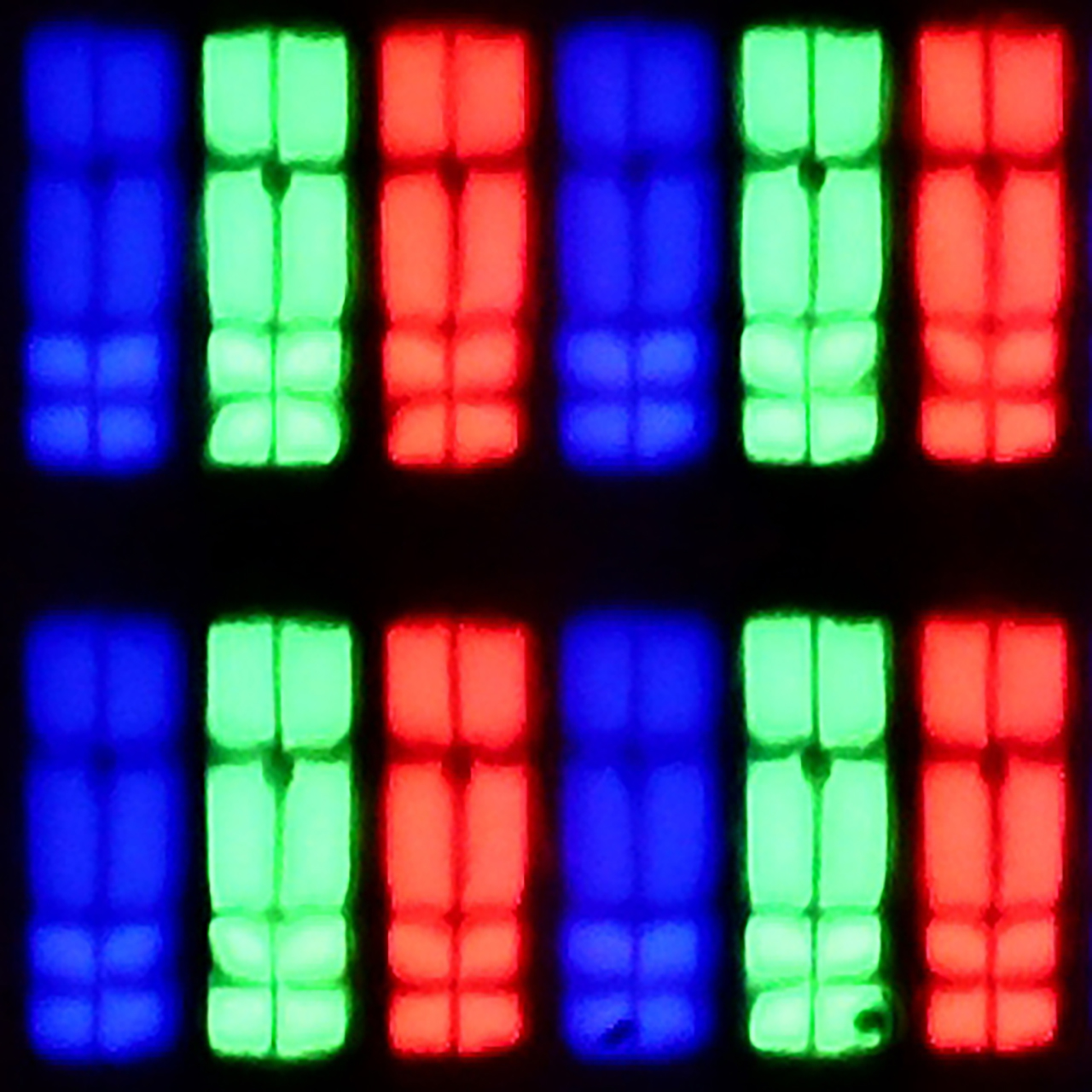
Panel uniformity and thermal imaging:
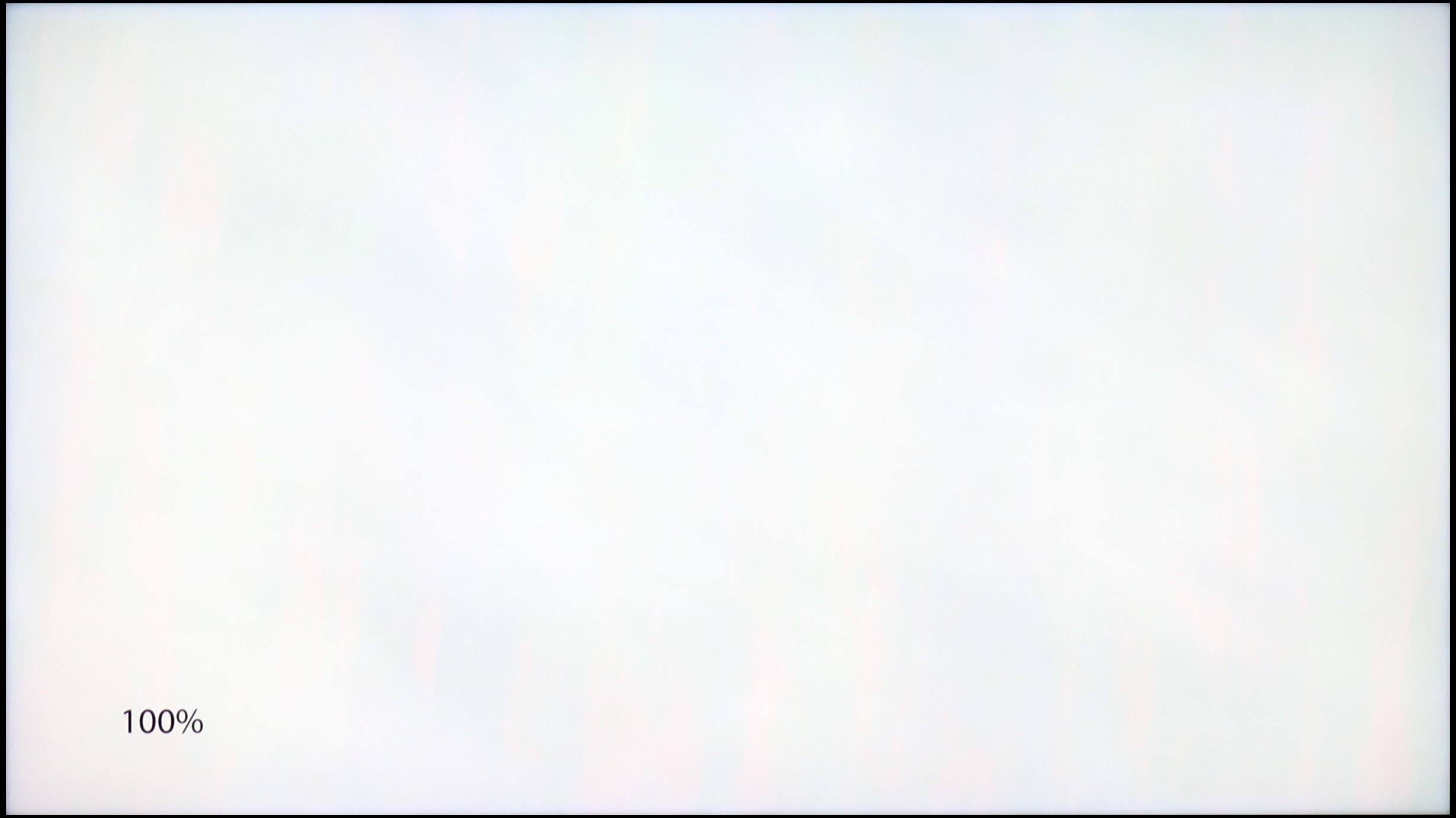
Hisense U8Q
TCL C7K / QM7K 55"-85"
TV features
9.4/10
7.3/10
- HDMI inputs0 x HDMI 2.0, 3 x HDMI 2.1 48Gbps2 x HDMI 2.0, 2 x HDMI 2.1 48Gbps
- Other inputsToslink (Optical audio), RCA (Chinch)
- OutputseARC (HDMI), ARC (HDMI), Mini-Jack (Headphones)Toslink (Optical audio), eARC (HDMI), ARC (HDMI)
- Network InterfacesWi-Fi 2.4GHz, Wi-Fi 5GHz, Ethernet (LAN) 100MbpsWi-Fi 2.4GHz, Wi-Fi 5GHz, Ethernet (LAN) 100Mbps
- TV receptionDVB-T, DVB-T2, DVB-S, DVB-S2, DVB-CDVB-T, DVB-T2, DVB-S, DVB-S2, DVB-C
Classic features:
- Recording to USB (terrestrial TV)
- Recording programming
- Picture in Picture (PiP)
- RF remote control (no need to aim at the screen)
- Backlit remote control
- Teletext
- Audio only mode
- Bluetooth headphones support
- Simultaneous Bluetooth headphones & TV audio
Smart features:
- AirPlay
- Screen mirroring (Windows Miracast)
- Voice search
- Voice search in native language
- Ability to connect a keyboard and mouse
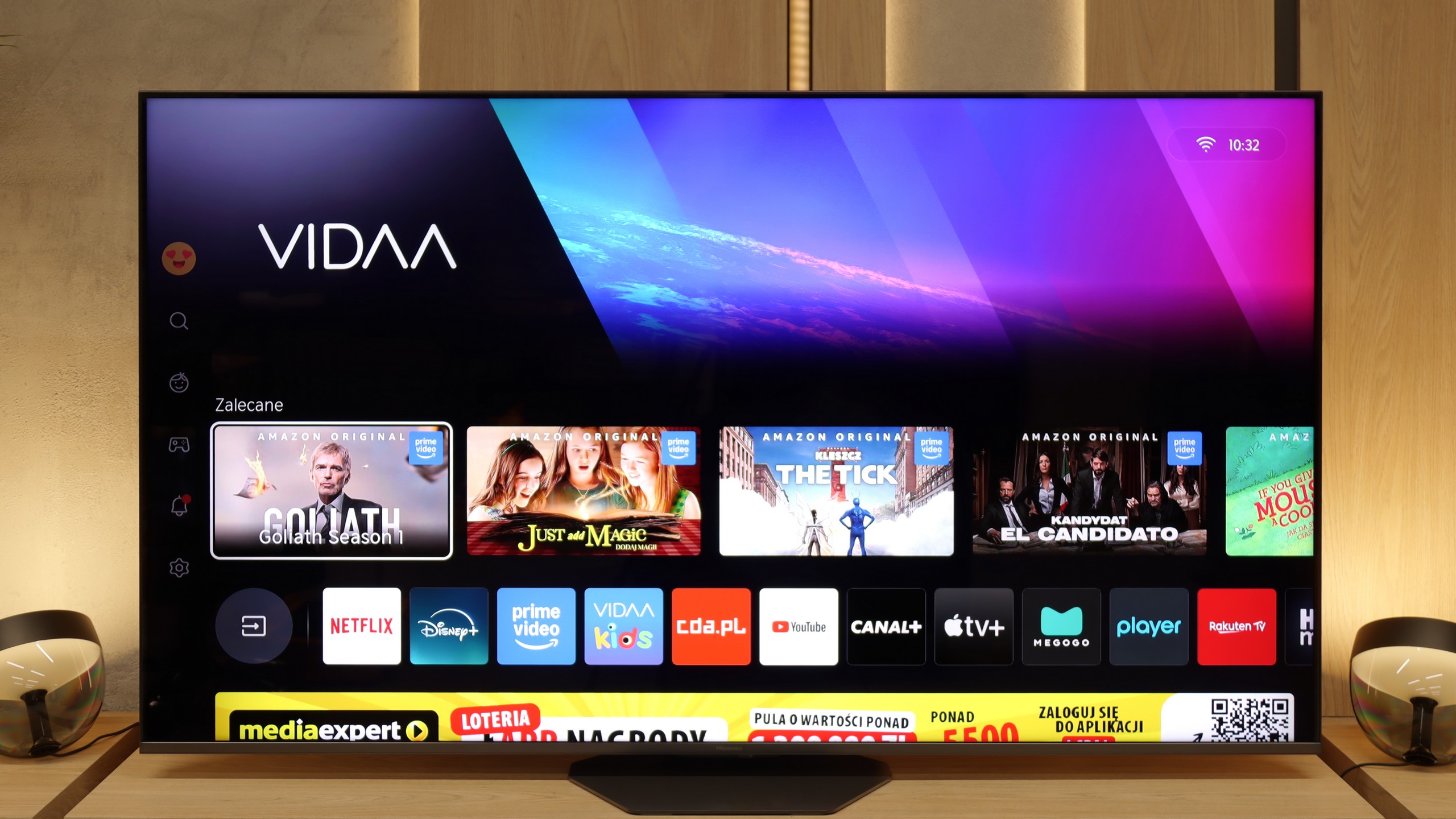
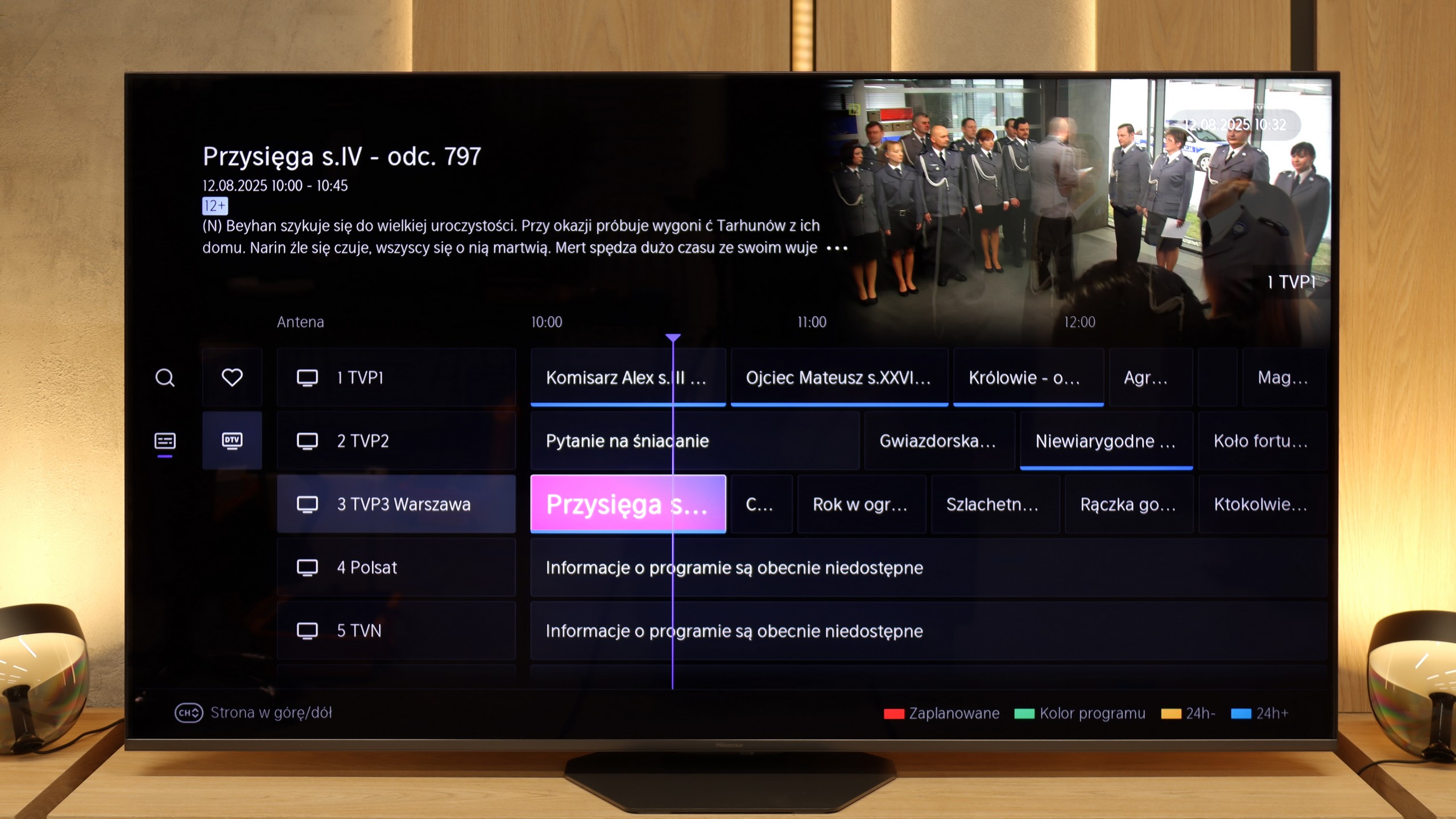
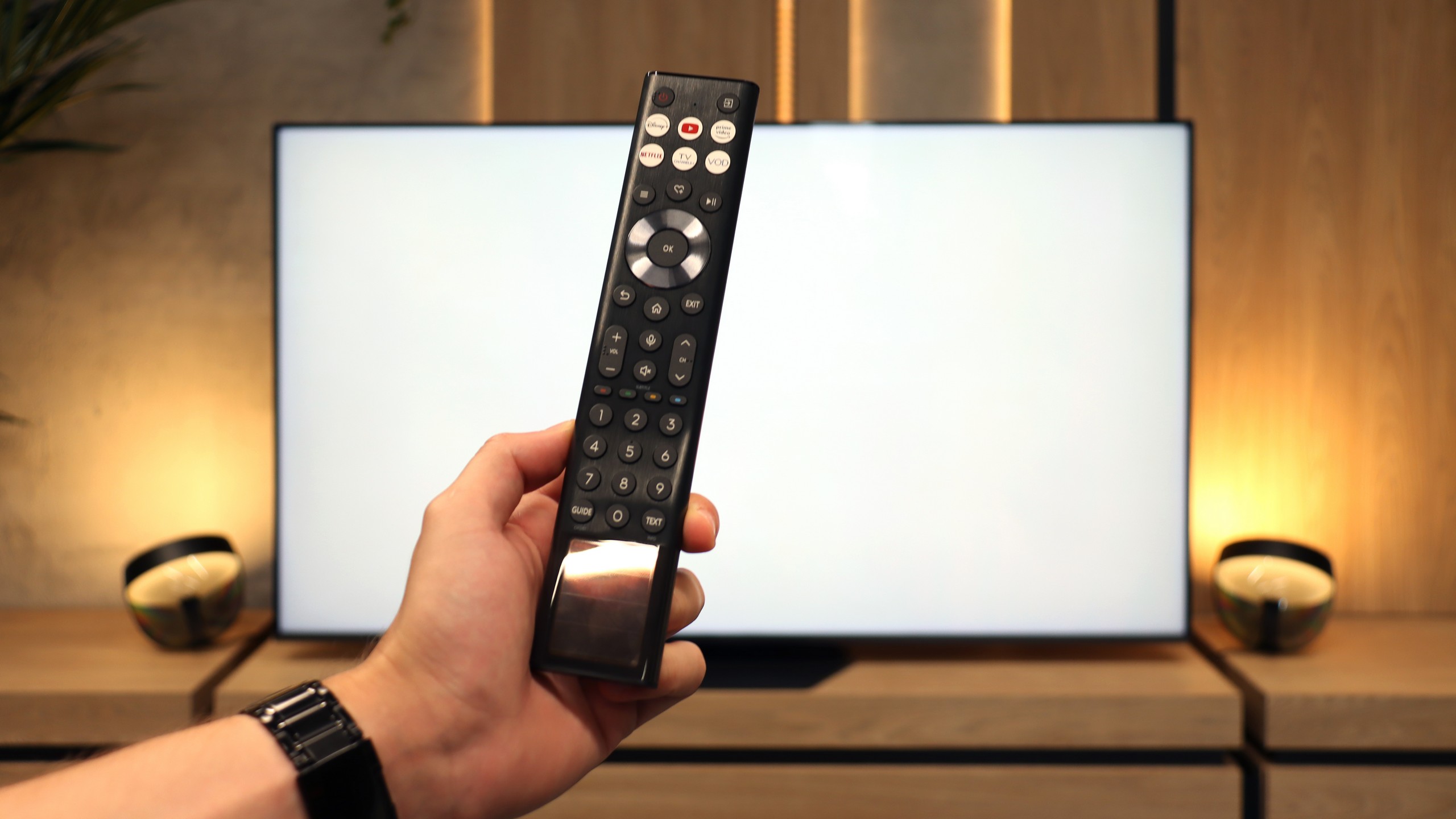
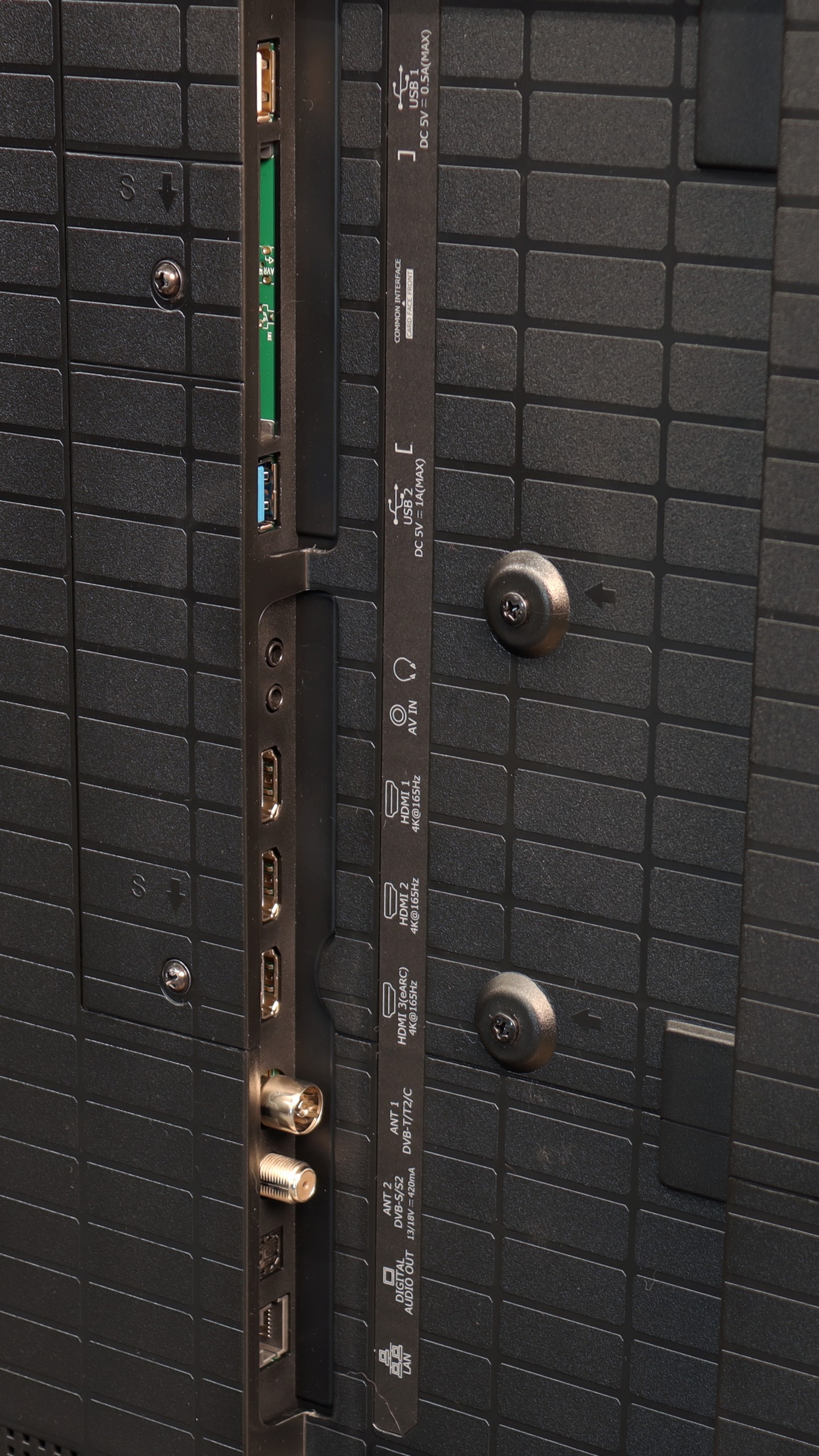
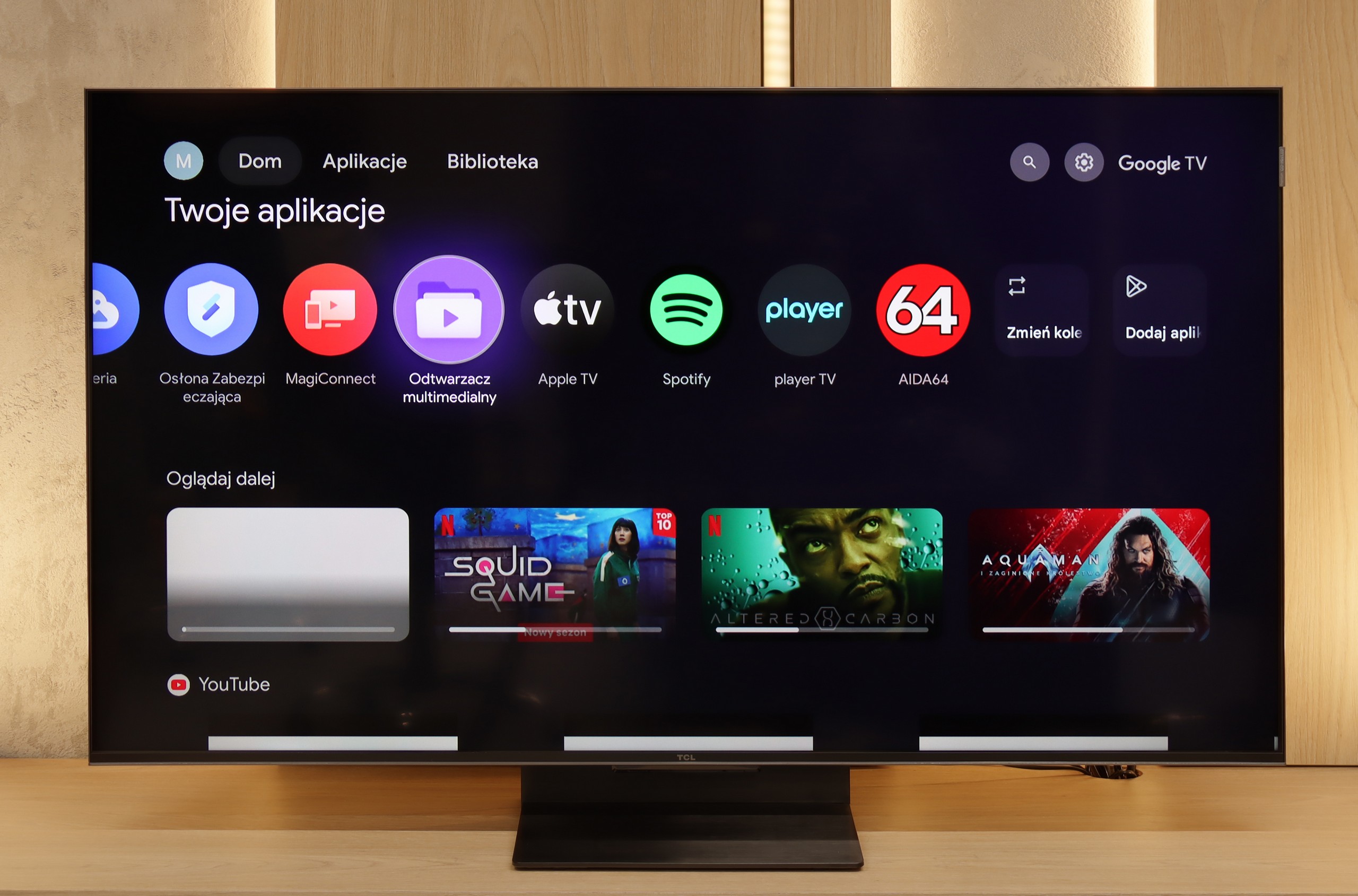
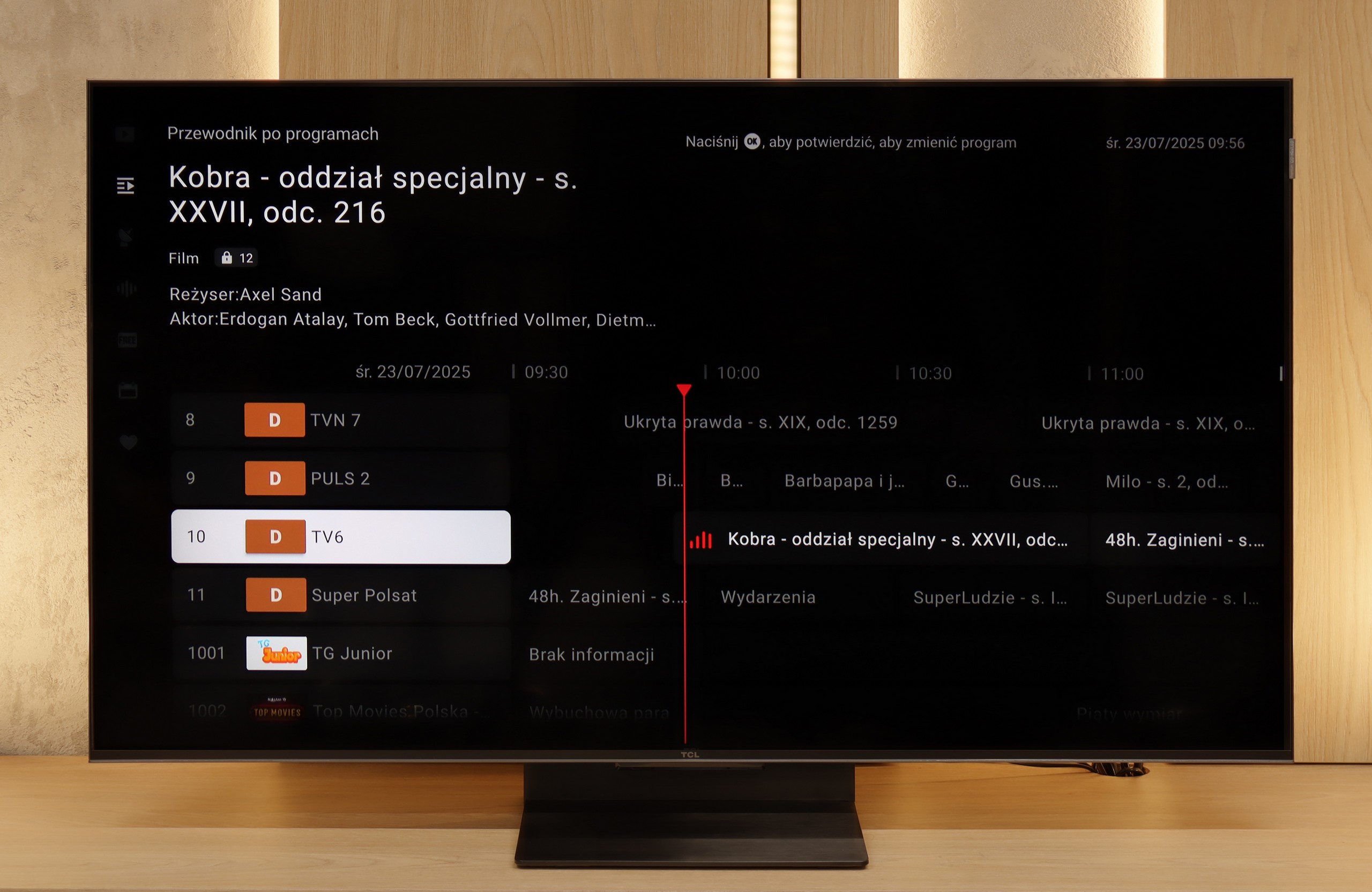
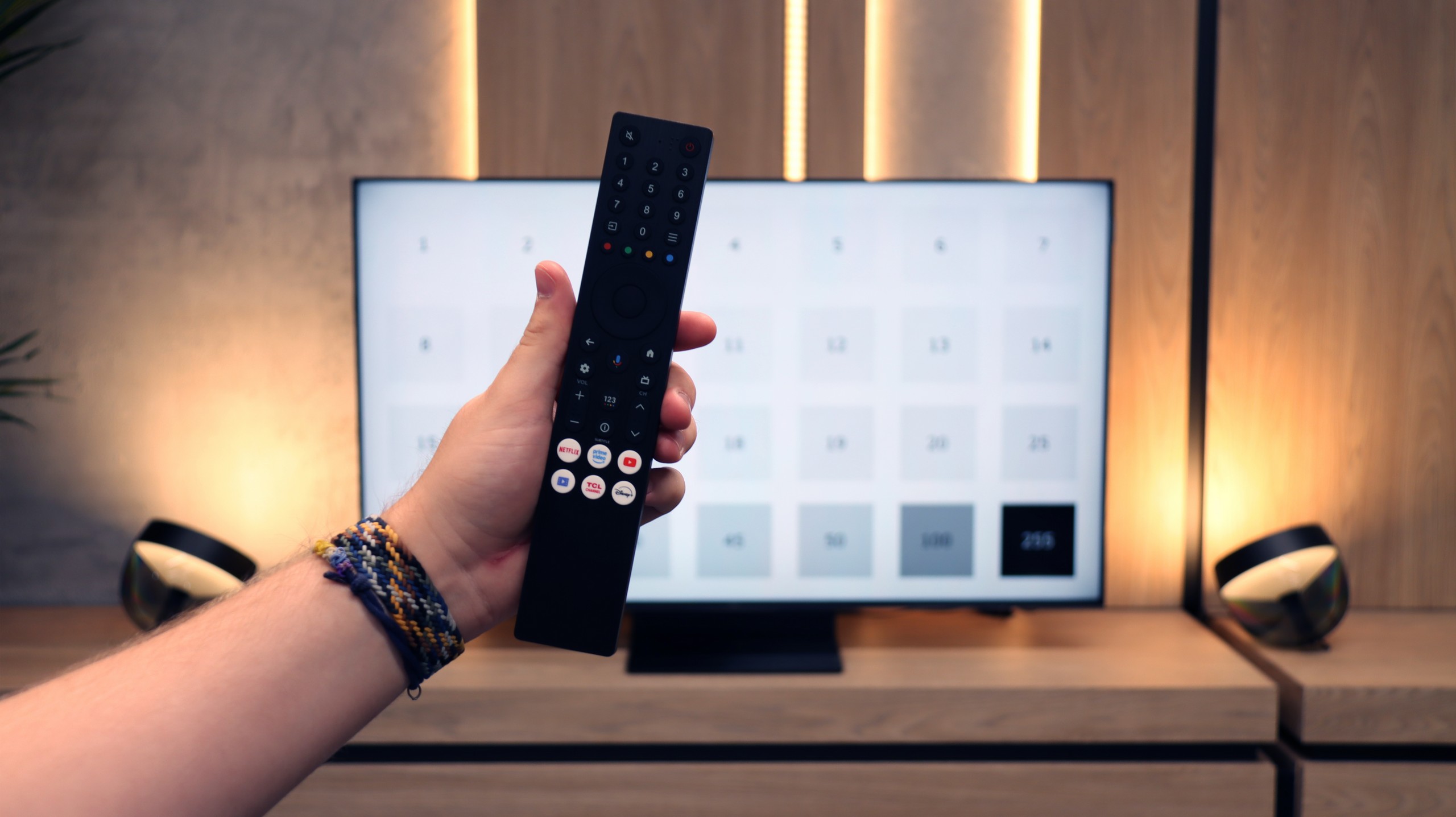
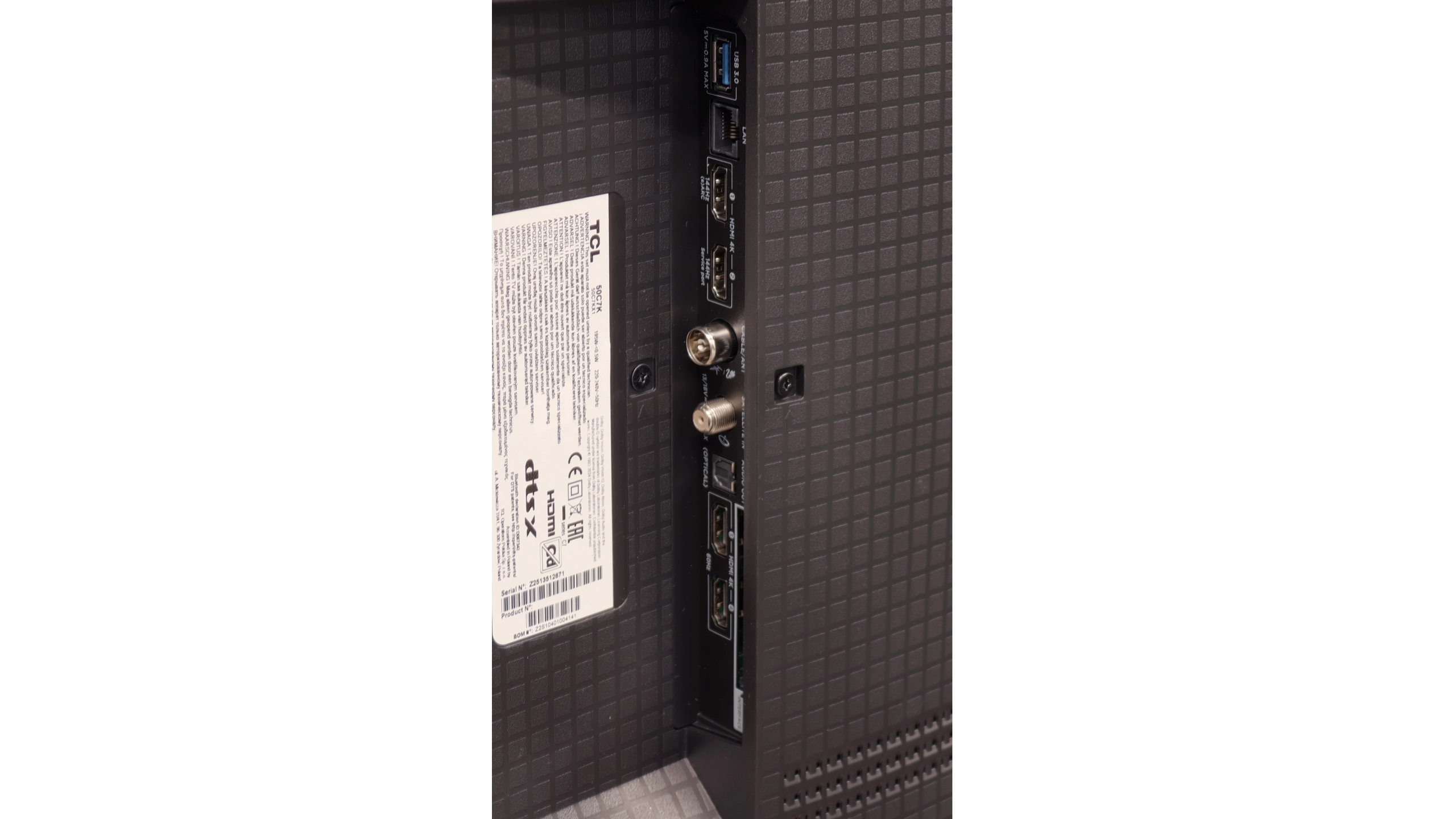
Classic Features
Hisense U8Q operates on the VIDAA system, which can still be called a newcomer in the European market, but it must be admitted – the manufacturer has a lot to offer here. We find classic features that are still useful for many people: USB recording, a clear EPG guide, and the ability to connect wired headphones, which especially seniors will appreciate. A nice addition is the presence of an audio jack – a connector that is slowly disappearing from TVs, and here it has been preserved.
USB-C in the TV!
A novelty in the U8Q is also the USB-C port with DisplayPort support. This is an unconventional but very practical solution – thanks to it, you can connect a laptop or phone with one cable, even if those devices do not have an HDMI output.
Smart Features: VIDAA
When it comes to smart features, VIDAA works smoothly. The interface is fast, applications open without significant delays, and network functions – such as screen mirroring and AirPlay – work very well. Of course, there are minor shortcomings, but these are more details than real problems. The Achilles' heel remains the somewhat limited application library. However, it is worth remembering that the list of available programs can change from day to day – some disappear, others appear, so the situation may improve.
SmartTV: GoogleTV
The biggest strength of the TCL C7K in everyday use is undoubtedly the Google TV system. Thanks to it, we have access to an almost endless library of applications, including those more niche ones that are often unavailable on other platforms. The built-in Google Assistant understands Polish, so we can easily ask what is on TV, what the weather is like, and even issue a few voice commands to control the television. We also have to appreciate the presence of Chromecast and AirPlay, which work smoothly and make life easier.
Usability Features
On the downside, the classic features perform a bit worse. Of course, we will find the basics here – teletext, EPG, or the ability to connect headphones – but that's basically it. There is a lack of USB recording functionality and picture-in-picture (PiP) mode, which can still be found with the competition at times. It is also worth noting that Google TV in the TCL version can sometimes have oddly translated fragments of the menu or minor interface bugs. These are not things that hinder everyday use, but detail-oriented people might notice them.
Playing files from USB
8.3/10
9.2/10
Supported photo formats:
Maximum photo resolution:
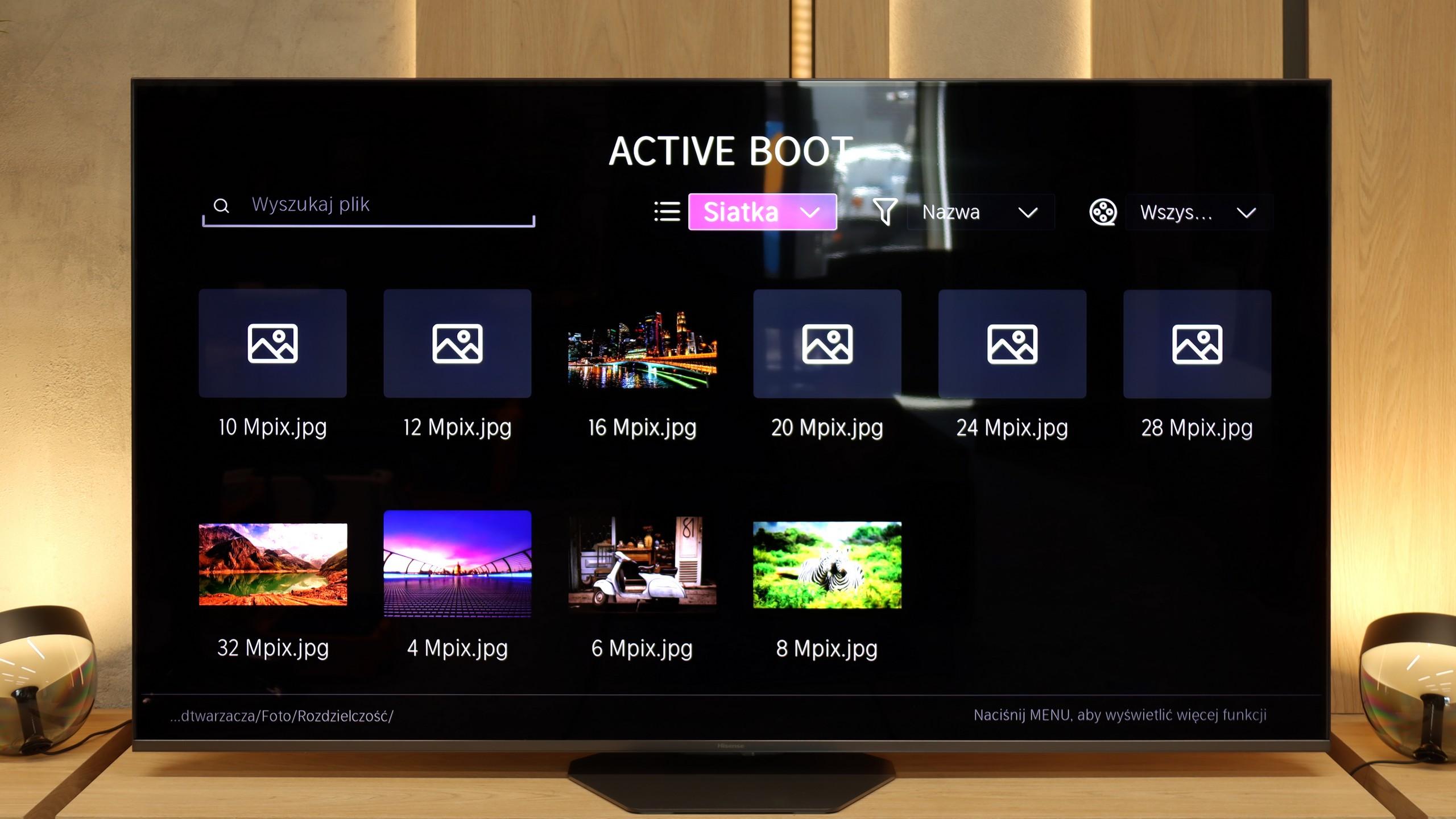

The built-in media player in the Hisense U8Q will be more than sufficient for most people. The TV opens popular video and audio formats and also handles photos. However, there is a small caveat – not all photo resolutions are supported. So, if we have photographs saved in a very large number of megapixels, they may simply not open. It’s worth keeping this in mind to avoid unpleasant surprises during the family photo presentation.
The built-in file player in the TCL C7K performs really well. It supports most popular audio and video formats, so if we want to quickly load something from a USB drive and play it, there shouldn't be a problem. Of course, as is often the case, there can be some minor shortcomings – not every exotic codec will work (Apple's HEIC), not all subtitles will be perfectly synchronized (txt.). However, the biggest advantage of this television comes to the rescue, which is Google TV. Thanks to access to the Google Play Store, we can easily install an alternative player, such as VLC, and then no file will be a challenge for us.
Apps
7.7/10
9.6/10














































Sound
7.8/10
7.7/10
- Maximum volume88dB-
- Dolby Digital Plus 7.1
- Dolby True HD 7.1
- Dolby Atmos in Dolby Digital Plus (JOC)
- Dolby Atmos in Dolby True HD
- DTS:X in DTS-HD MA
- DTS-HD Master Audio
Hisense U8Q performs really well in terms of sound. The sound quality is pleasant, with a light bass and quite decent mid tones, making it sufficient for everyday watching of movies, series, or gaming. It gets a bit worse when we crank the volume up to 100%. This is a rather rare scenario, but it’s worth mentioning. With very strong bass, the rear speakers start working so intensely that the television can slightly "rattle," and the sound turns into an unpleasant, plastic echo. Therefore, it’s best to keep the volume within 70–80% – at that level, the U8Q sounds clear and pleasant, without any undesired effects.
In larger versions of the C7K (from 55 inches and up), the sound makes an even better impression than in the smallest, 50-inch variant. This is due to the greater number of built-in speakers and additional channels that provide a fuller, more spacious sound. The bass becomes clearer, dialogues gain clarity, and sound effects can truly fill the room.
It's worth mentioning the collaboration between TCL and the Bang & Olufsen brand, which appeared in the 2025 models. Even if we are not a hundred percent sure whether original drivers from the Danish company are working inside, the final effect is surprisingly positive. As far as a TV without an additional soundbar goes, the larger C7K models offer sound that can be enjoyed even during longer movie sessions.
Sound Quality Test
Acoustic Measurements
88dBC (Max)
75dBC
No acoustic data
